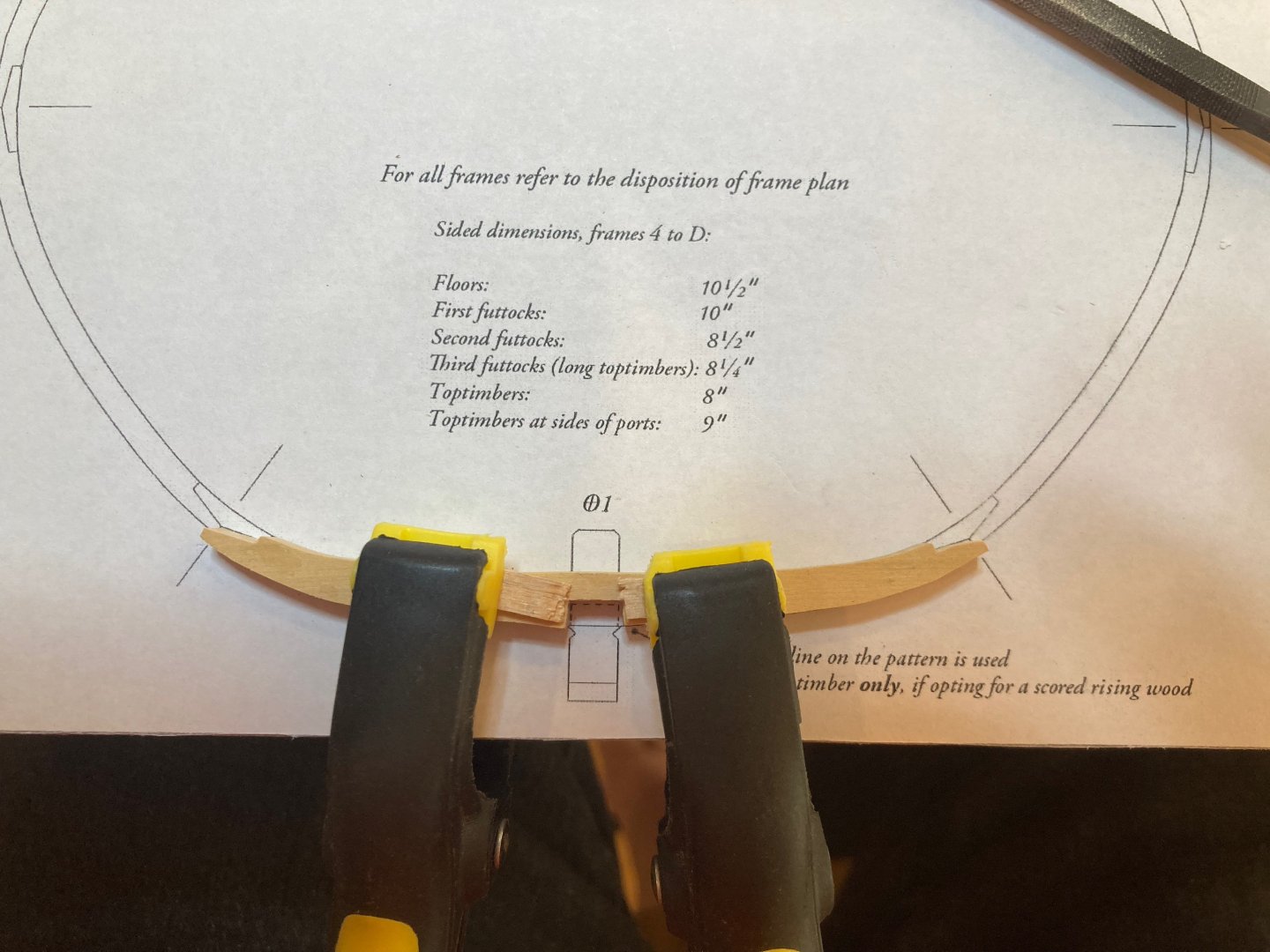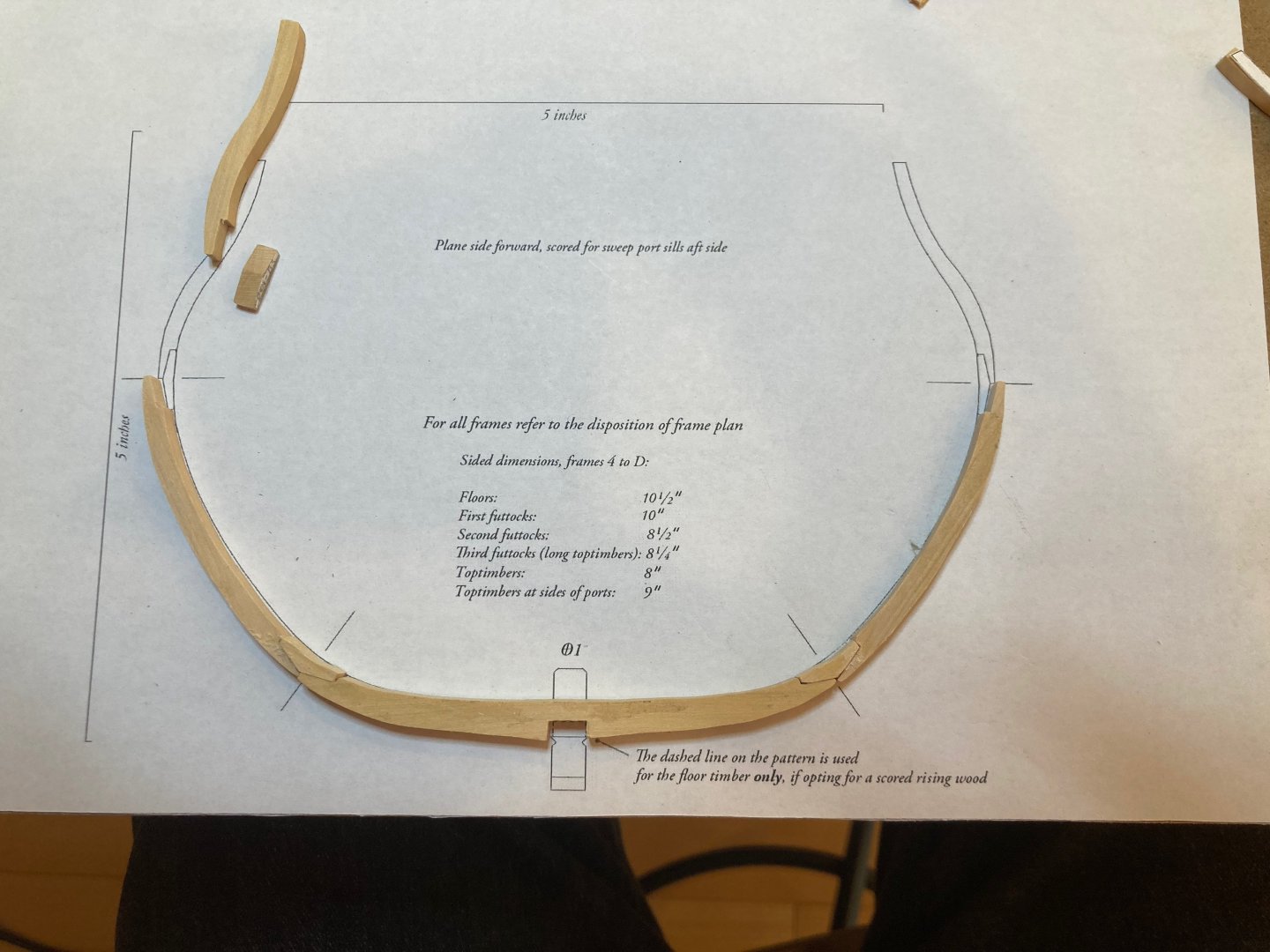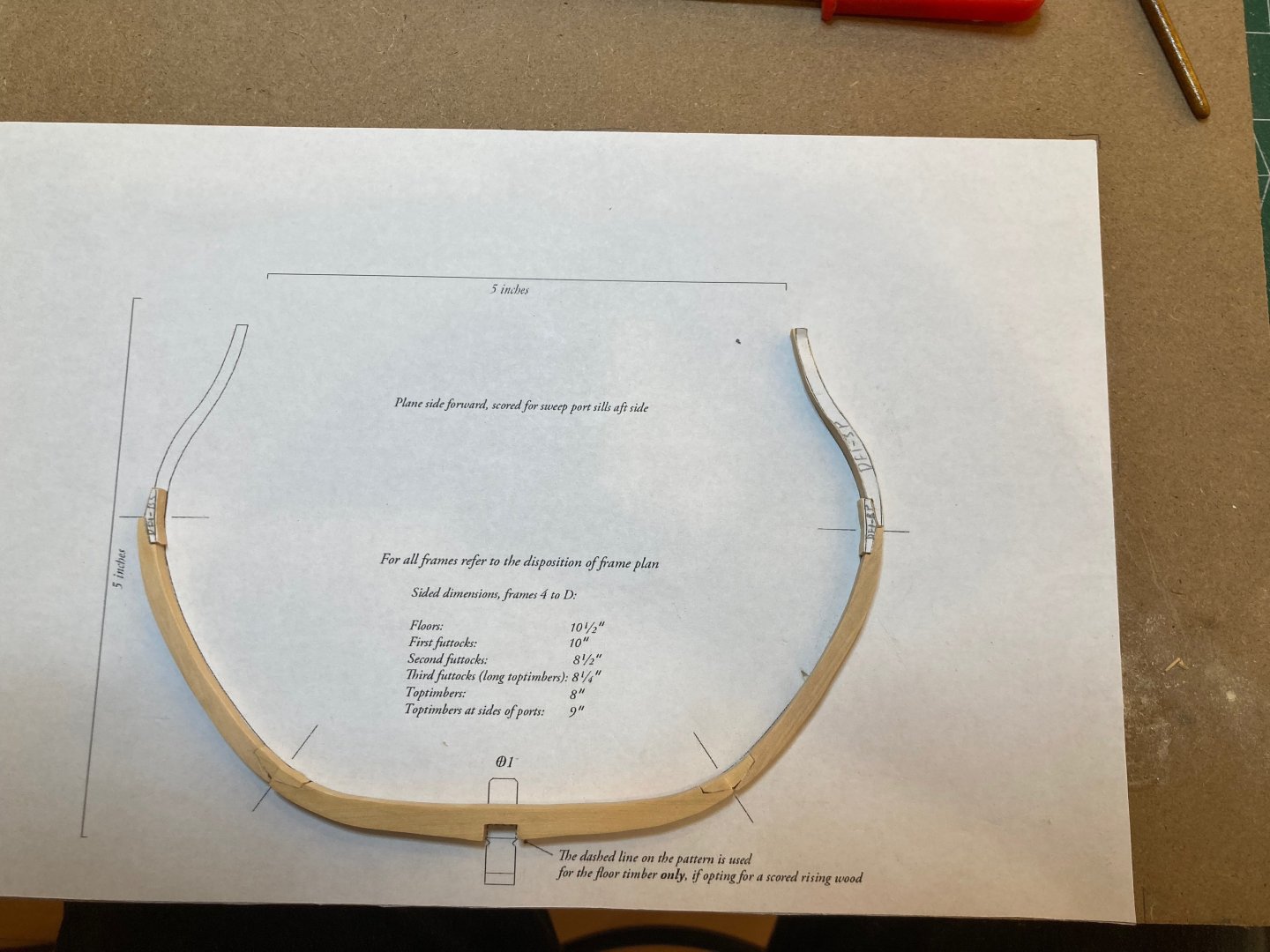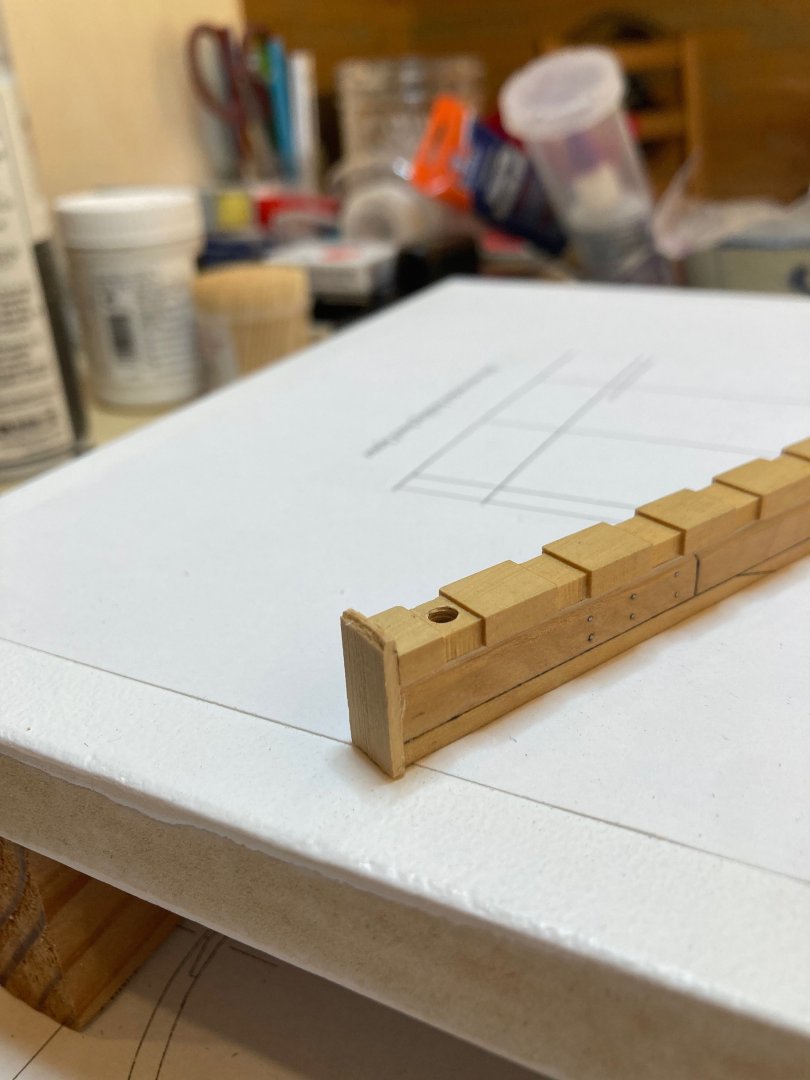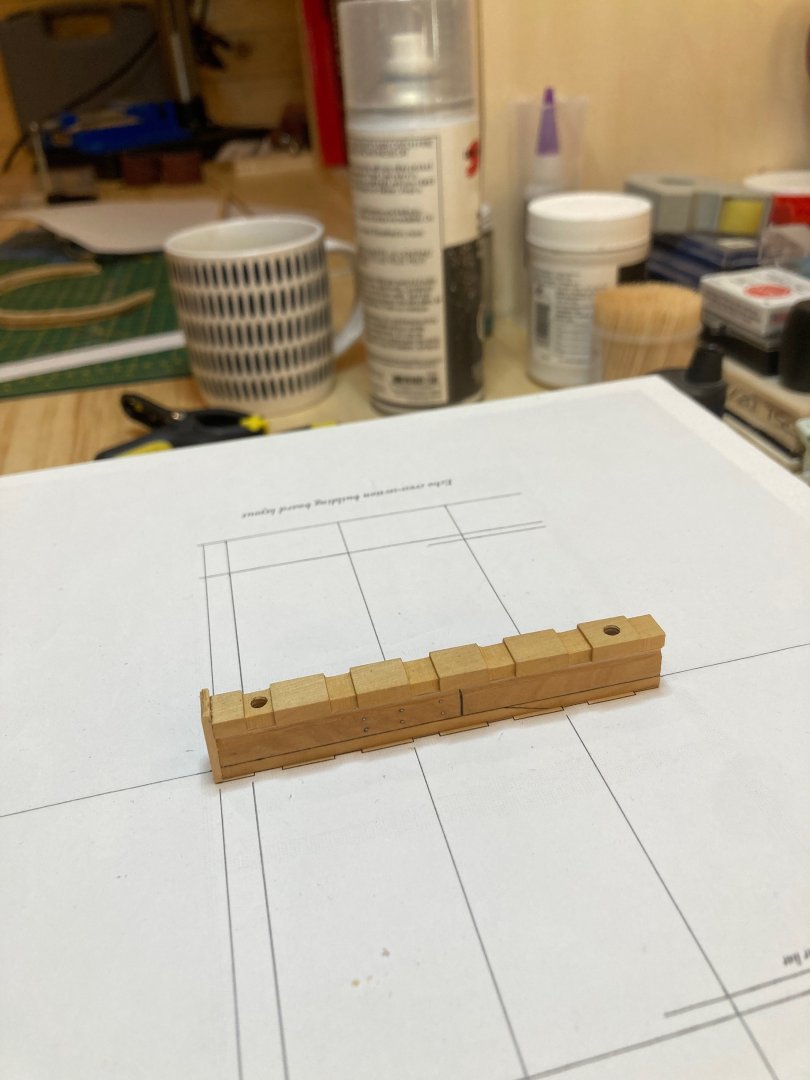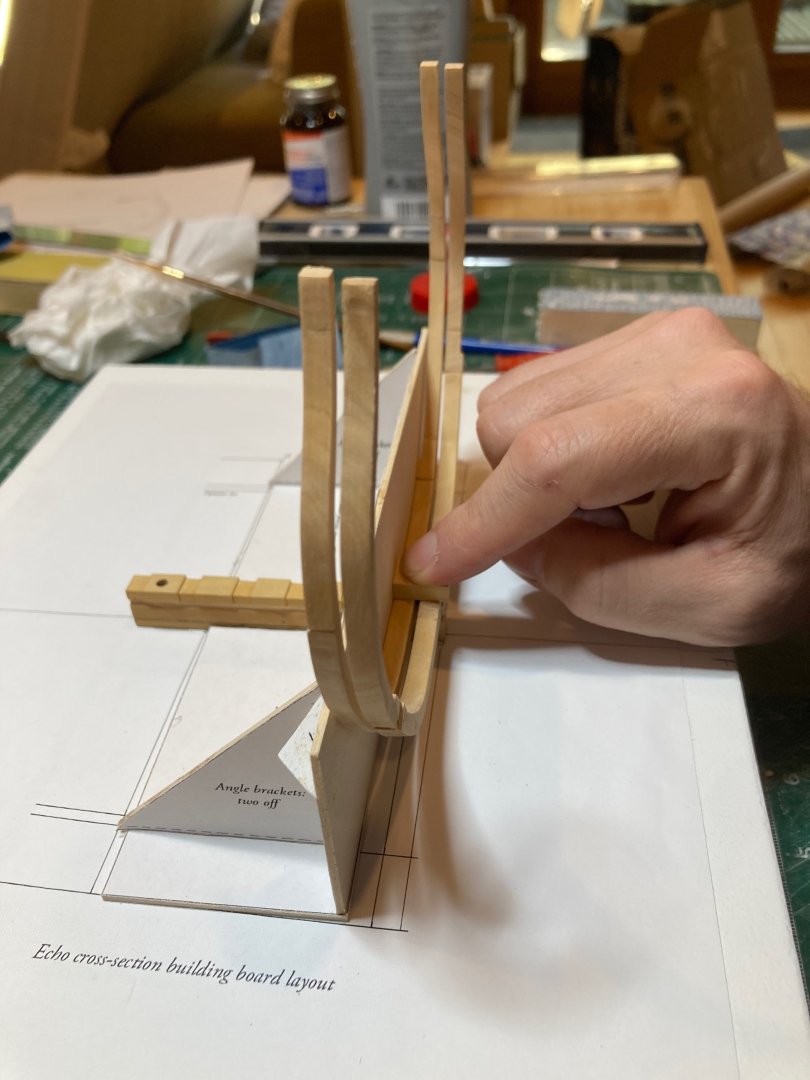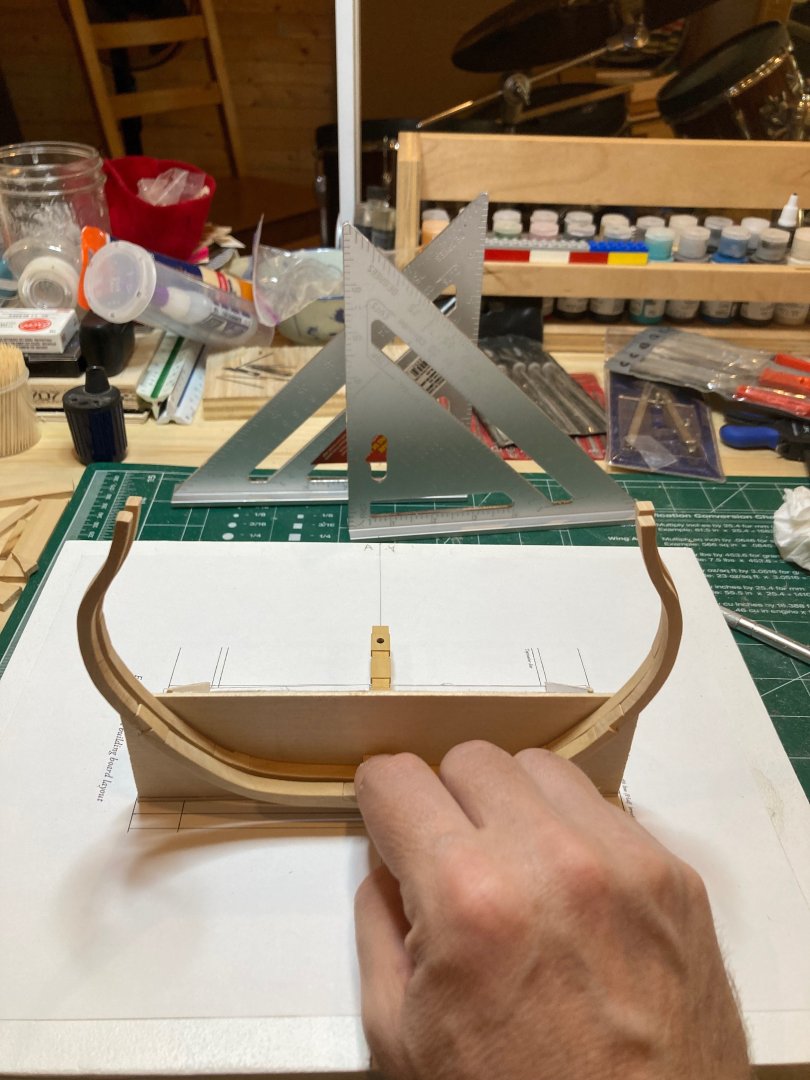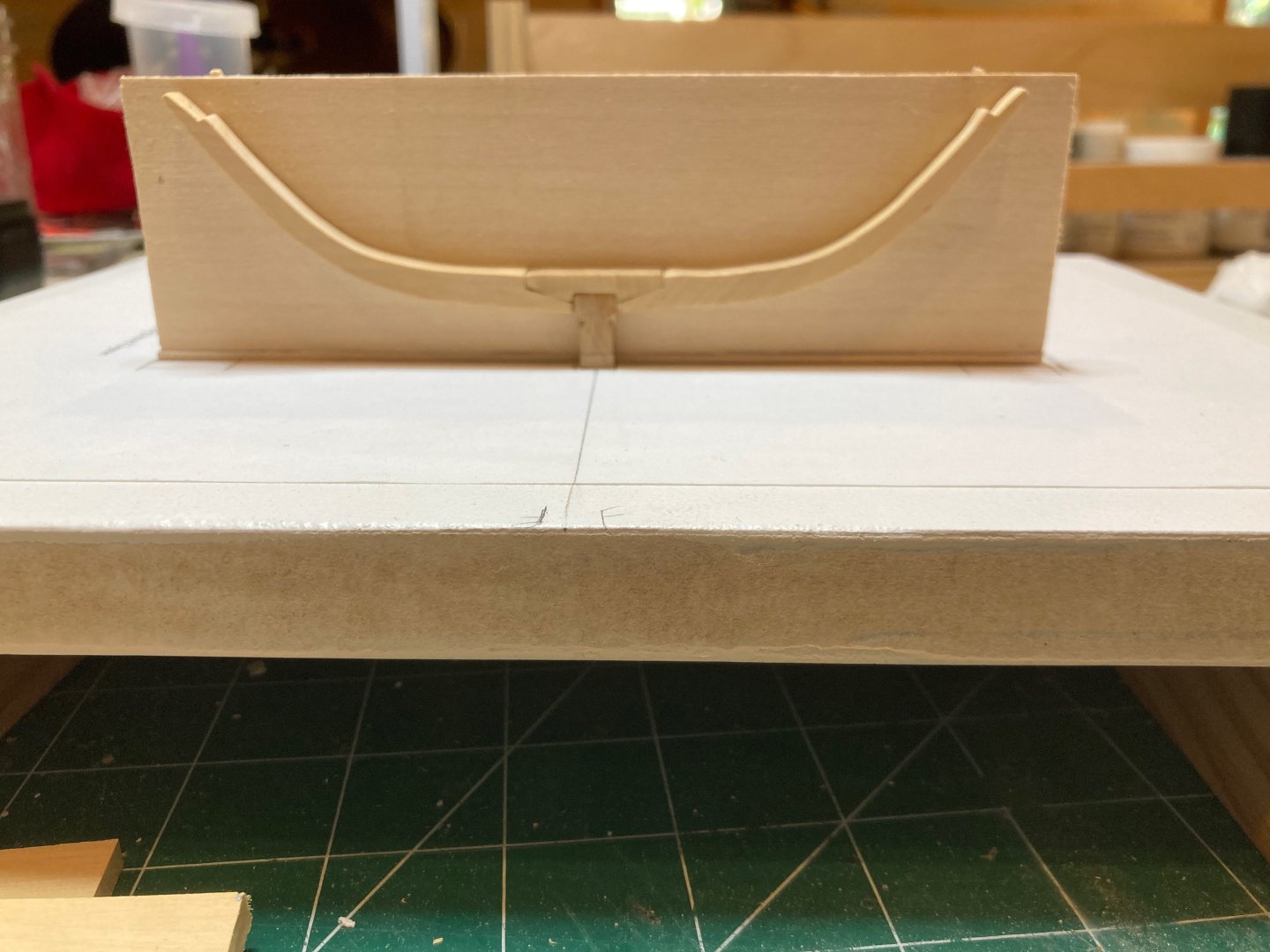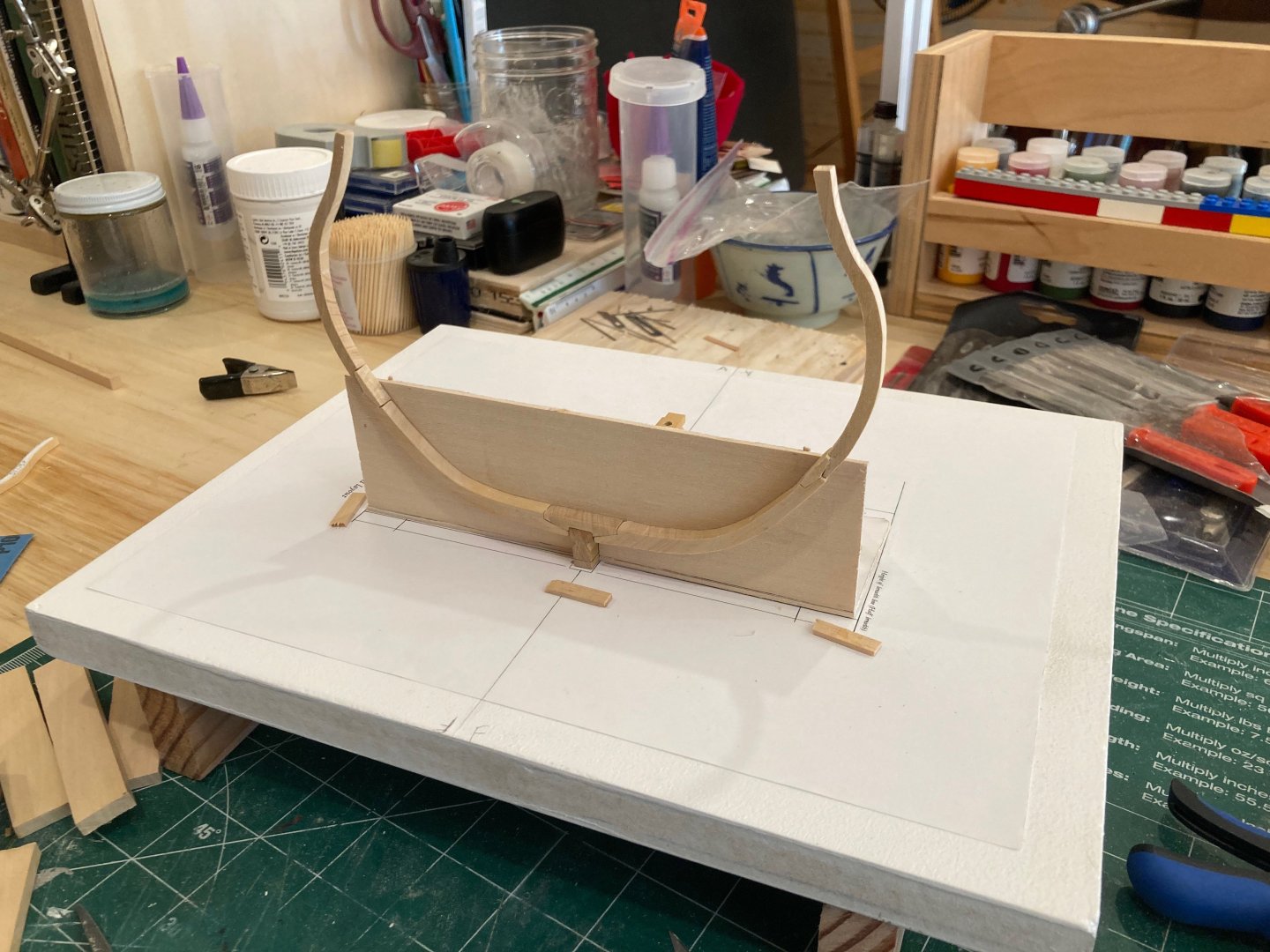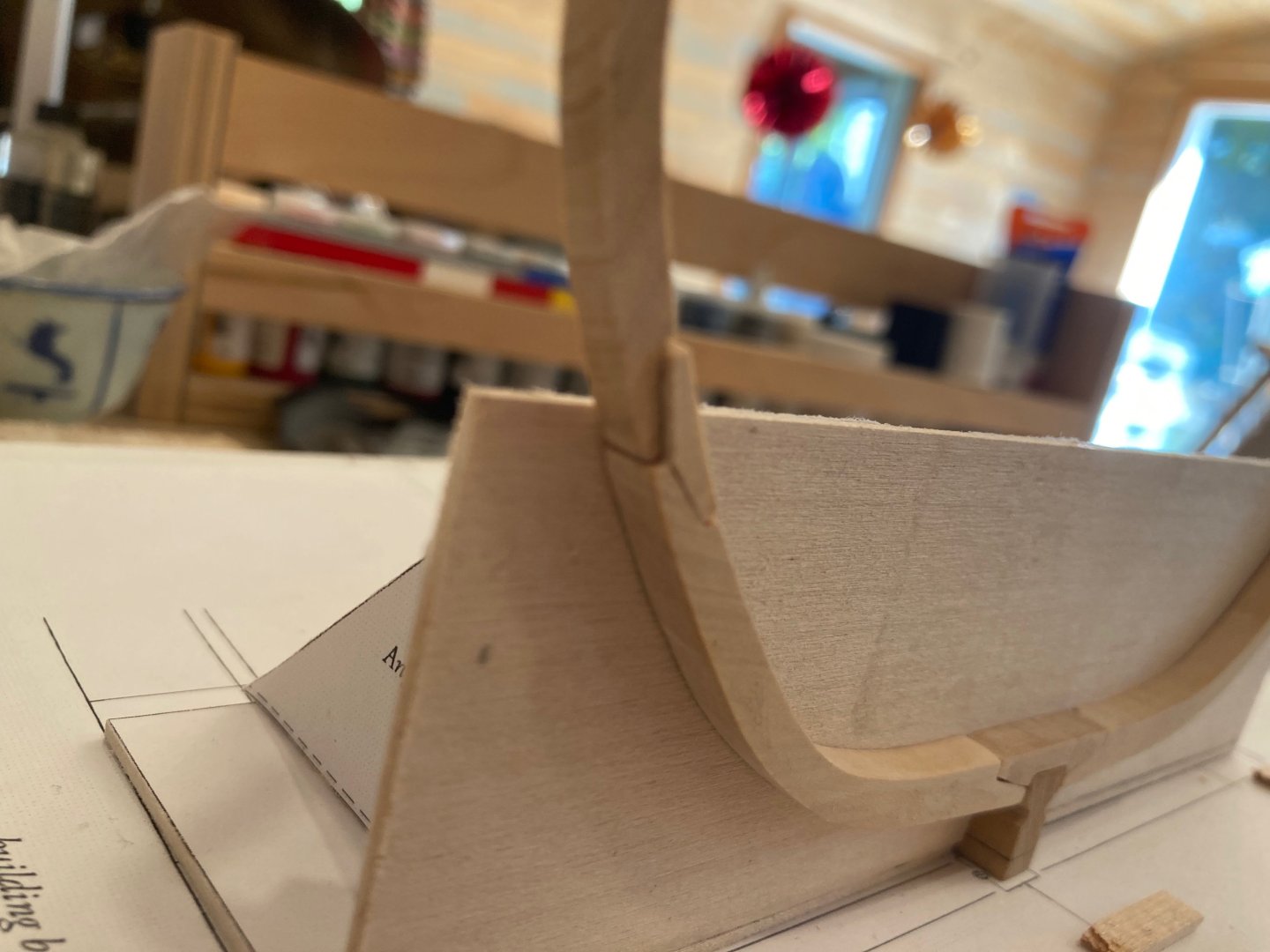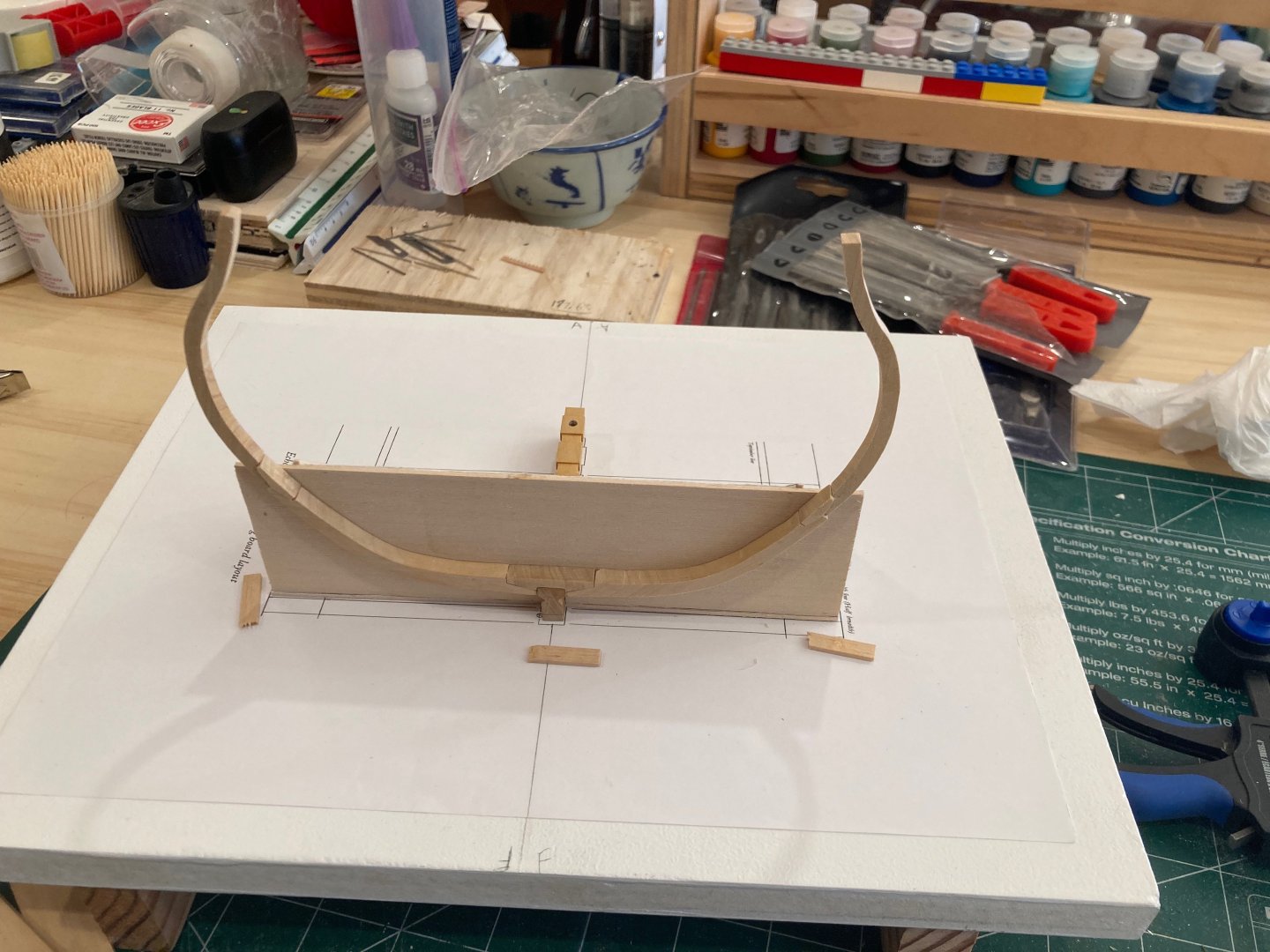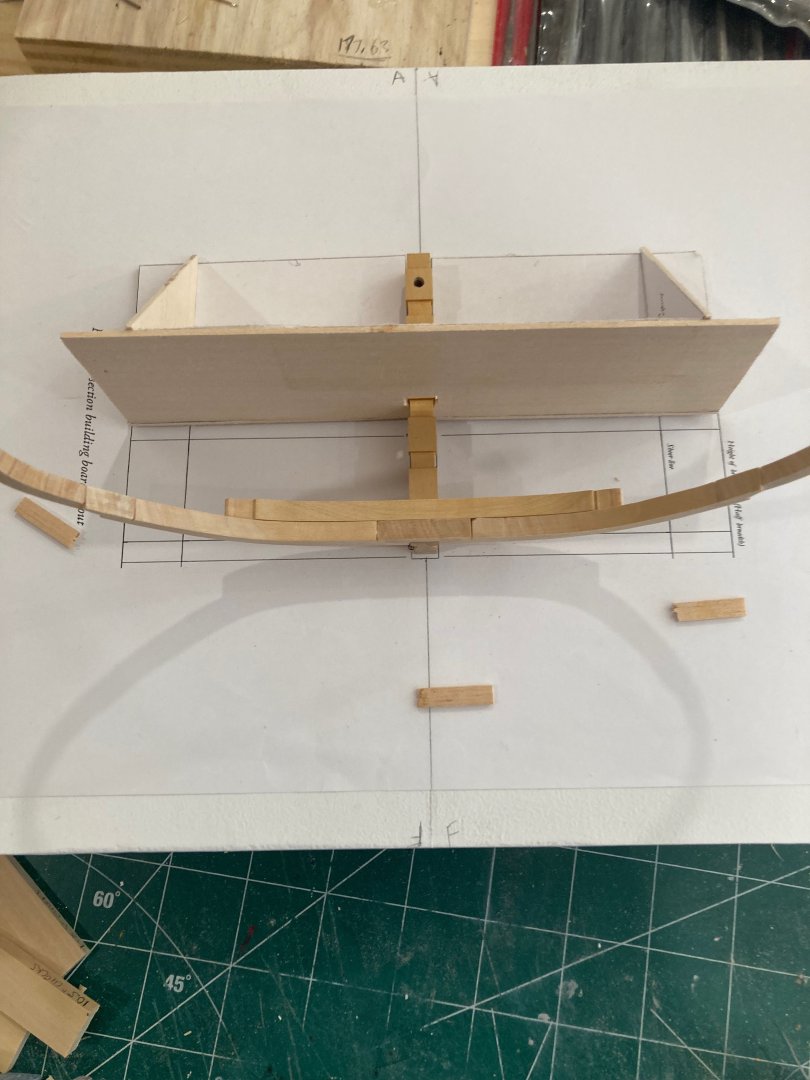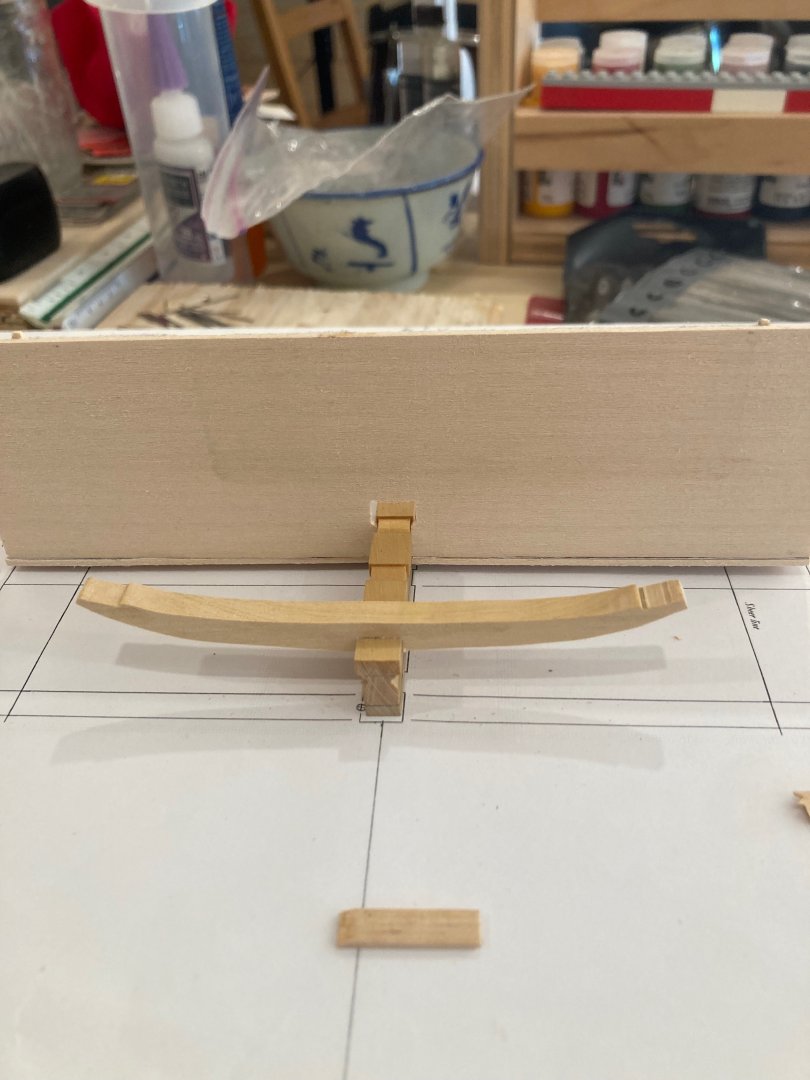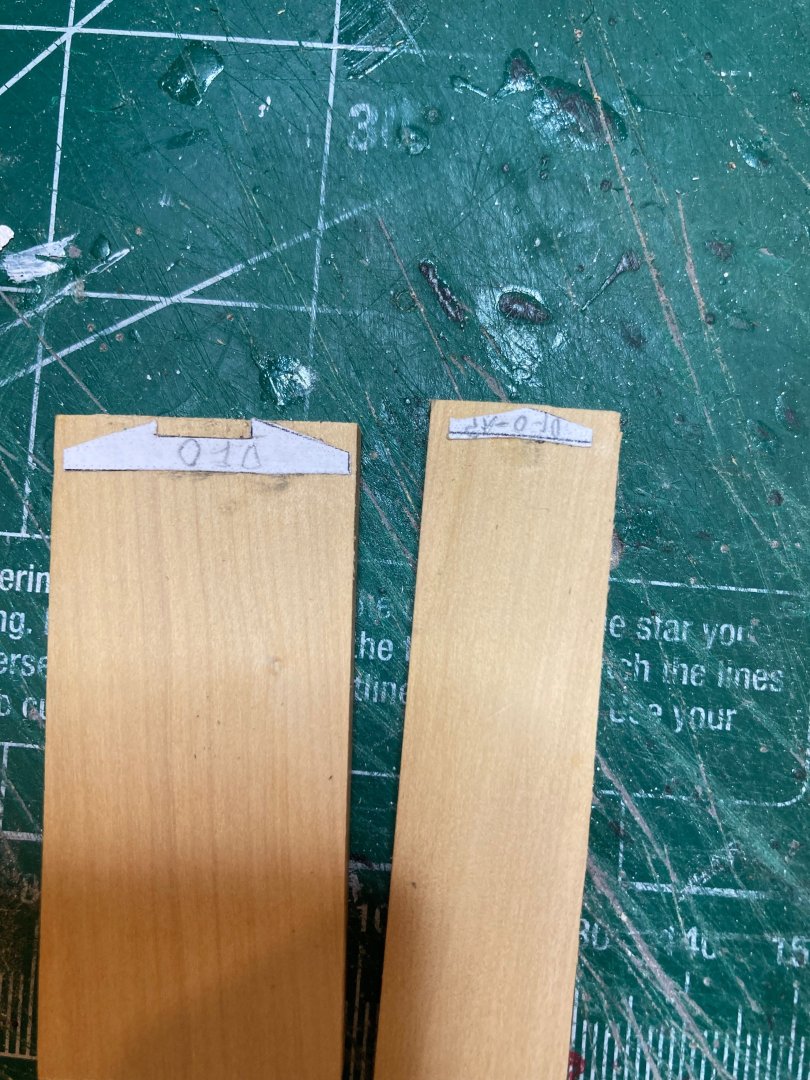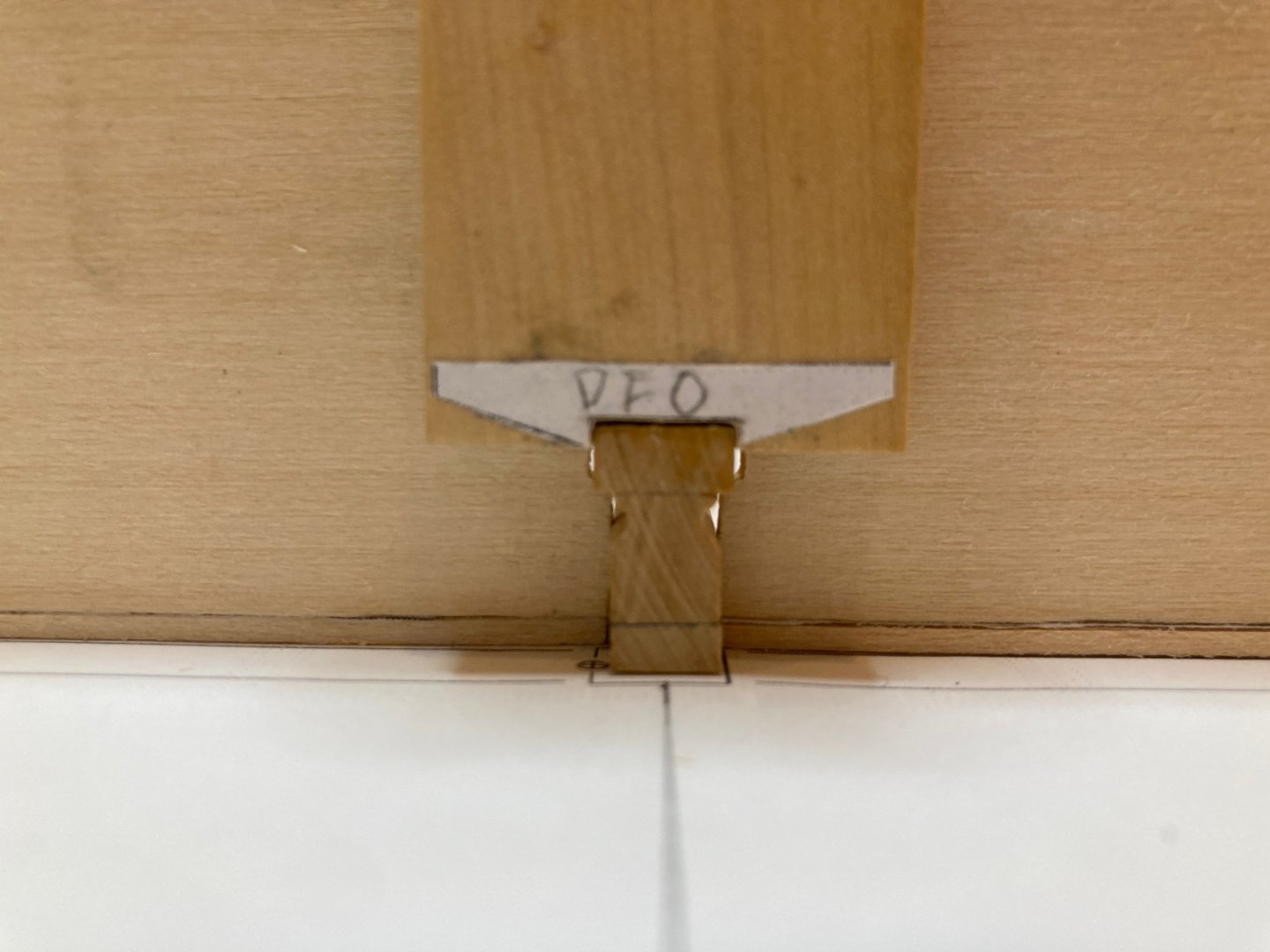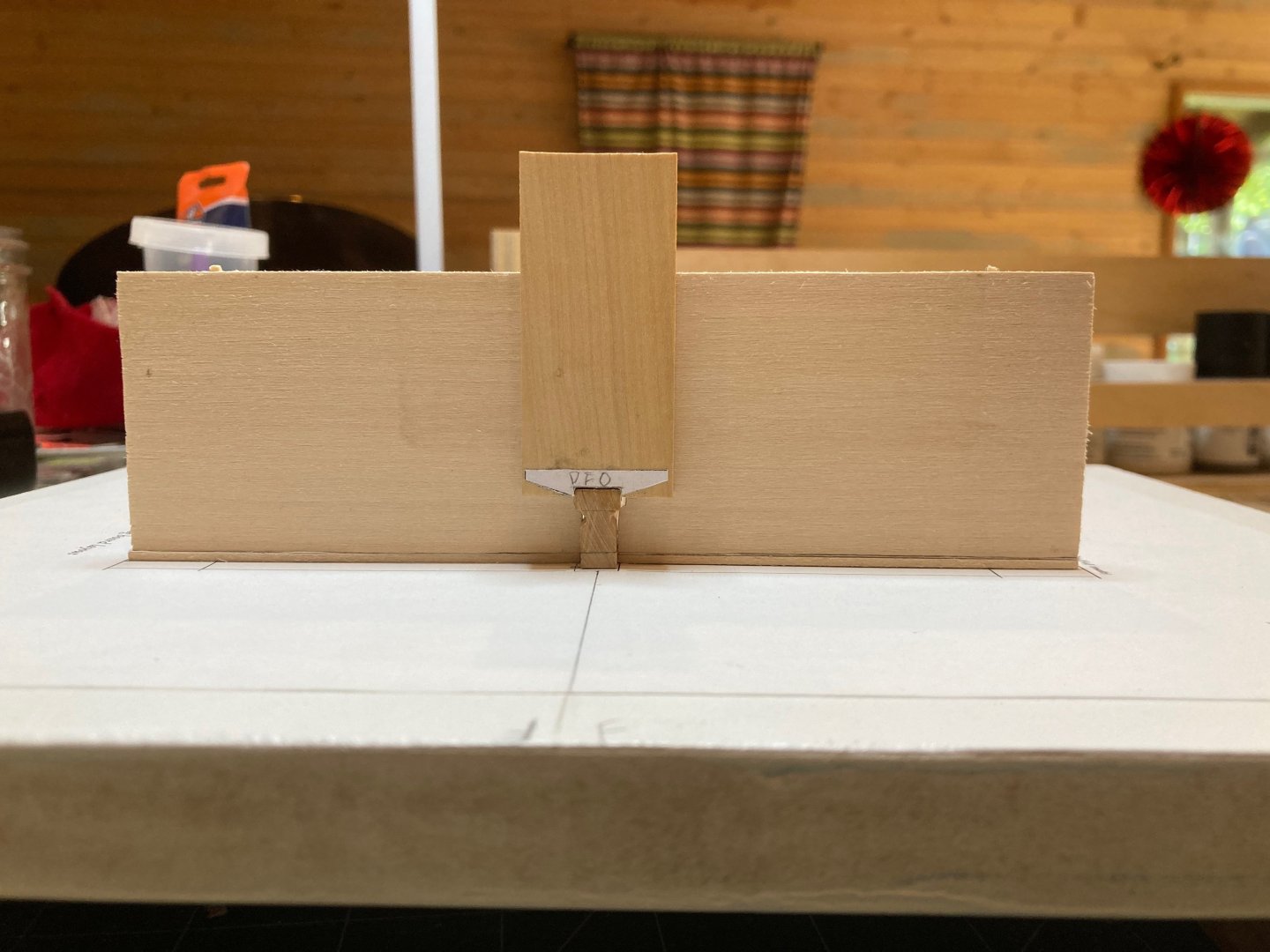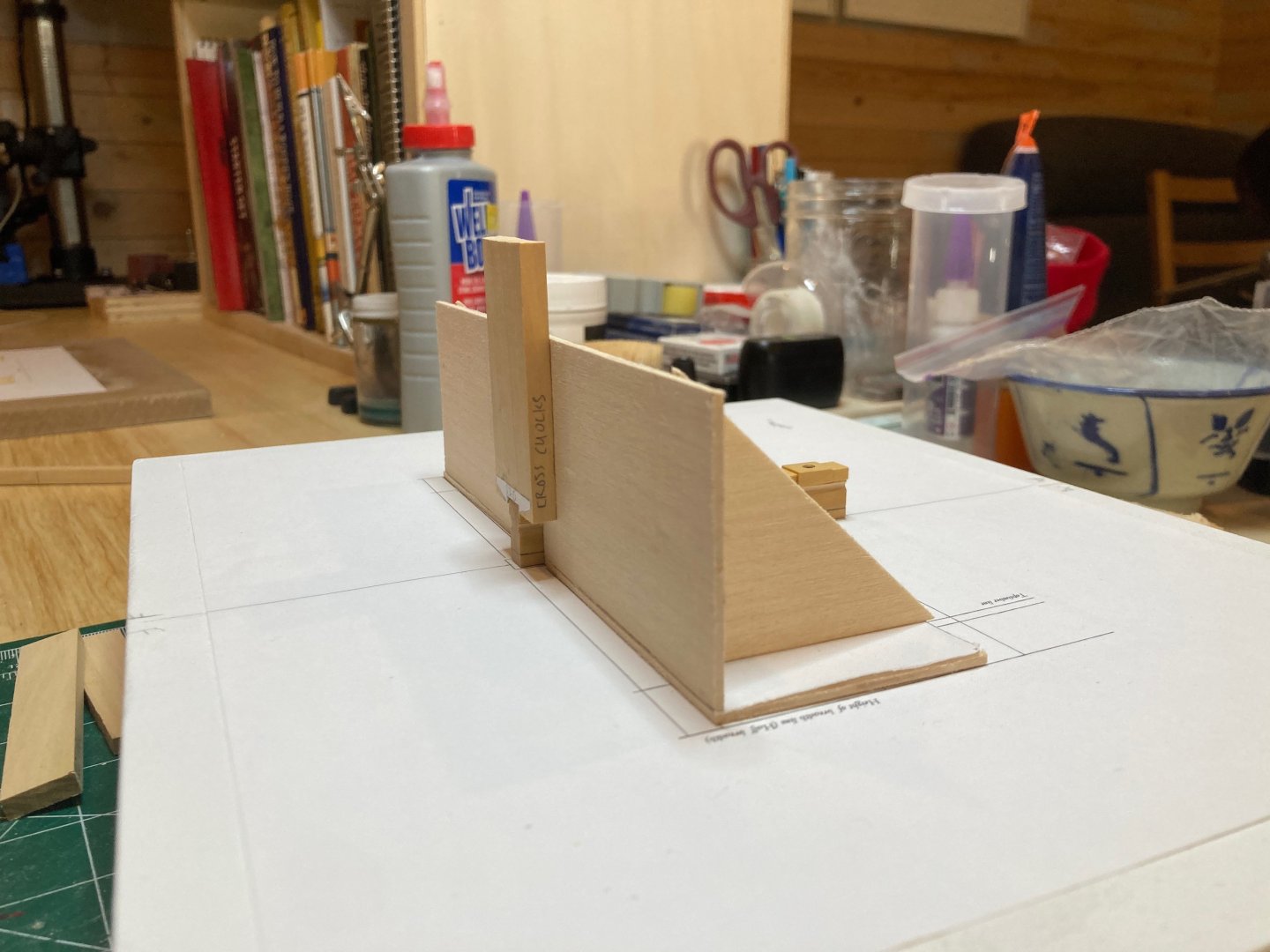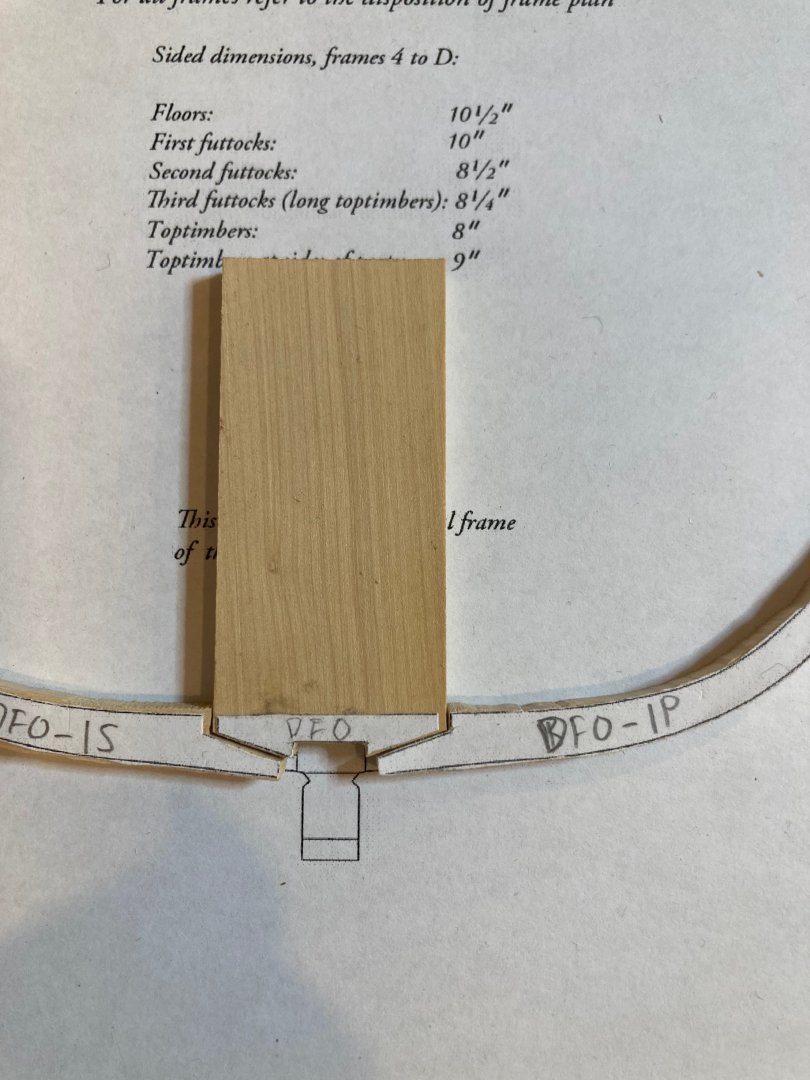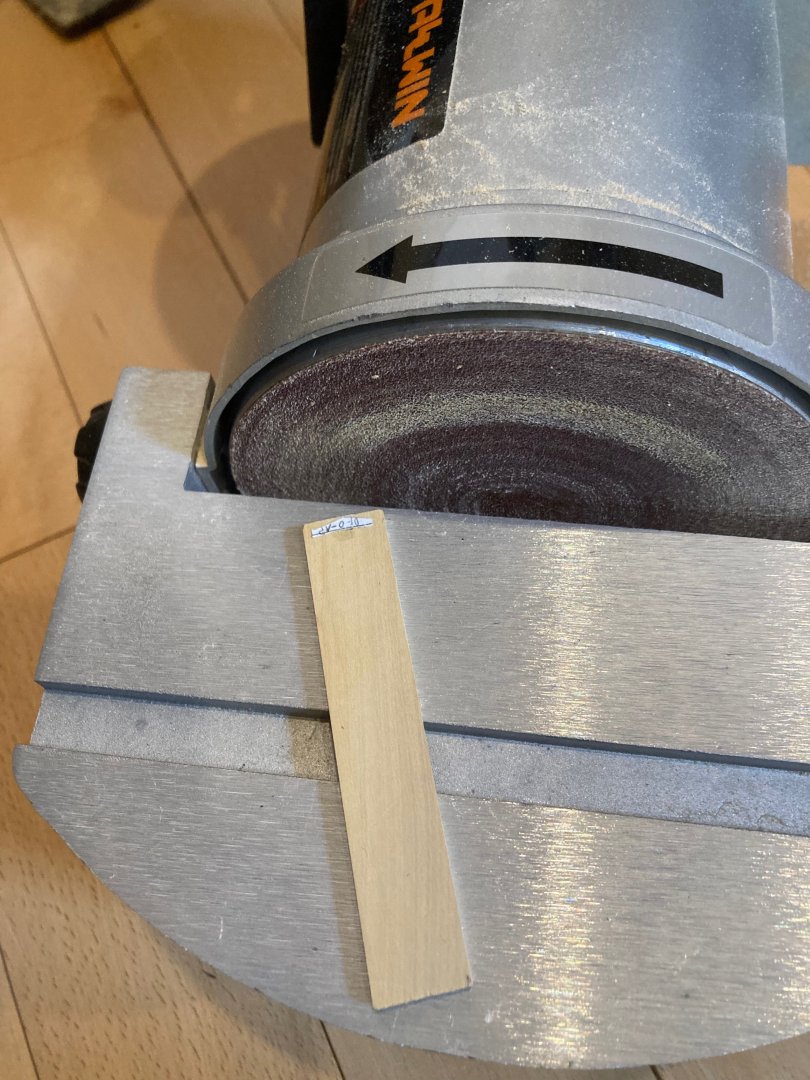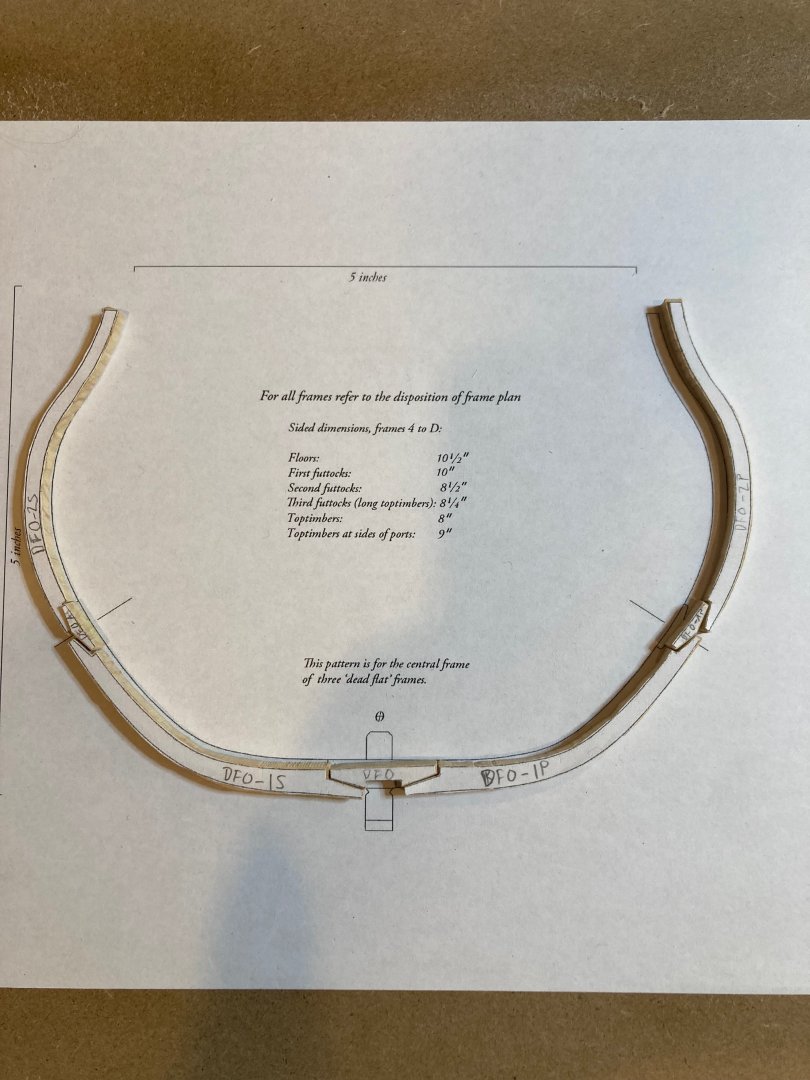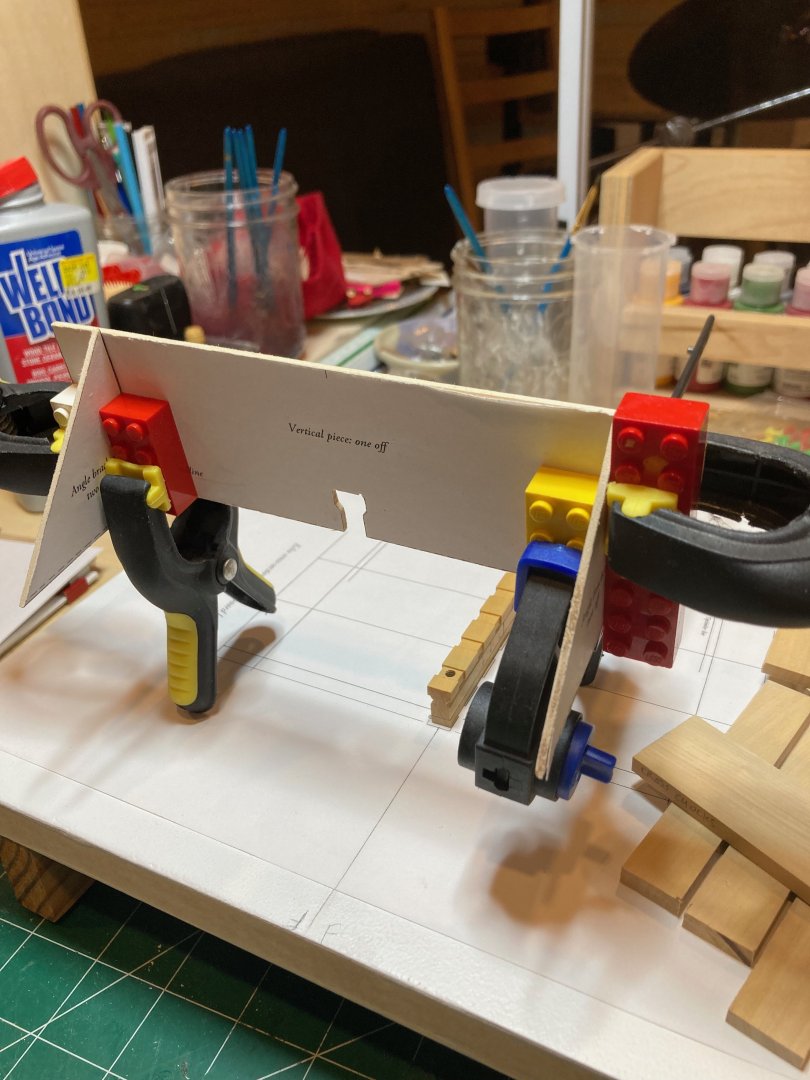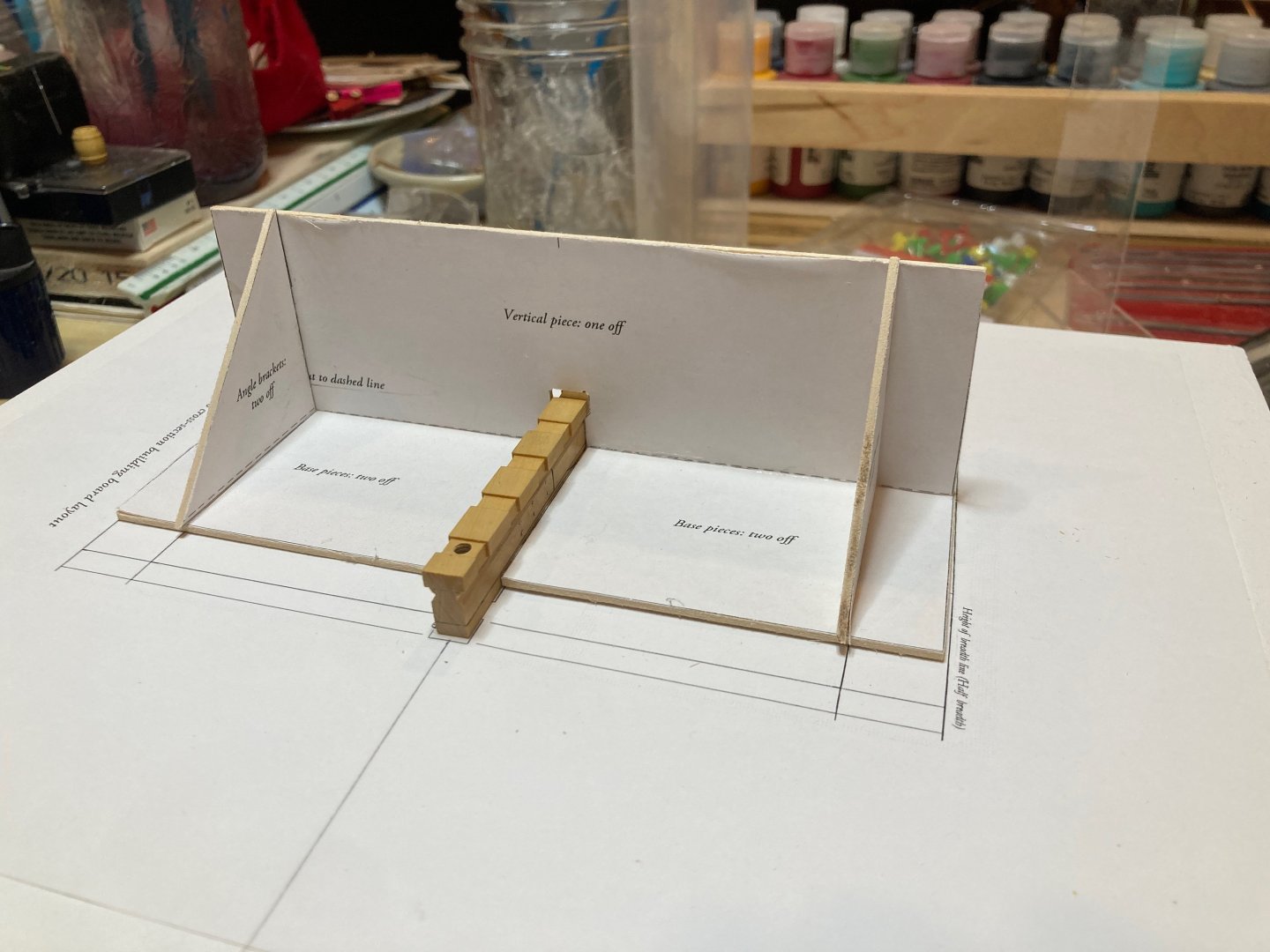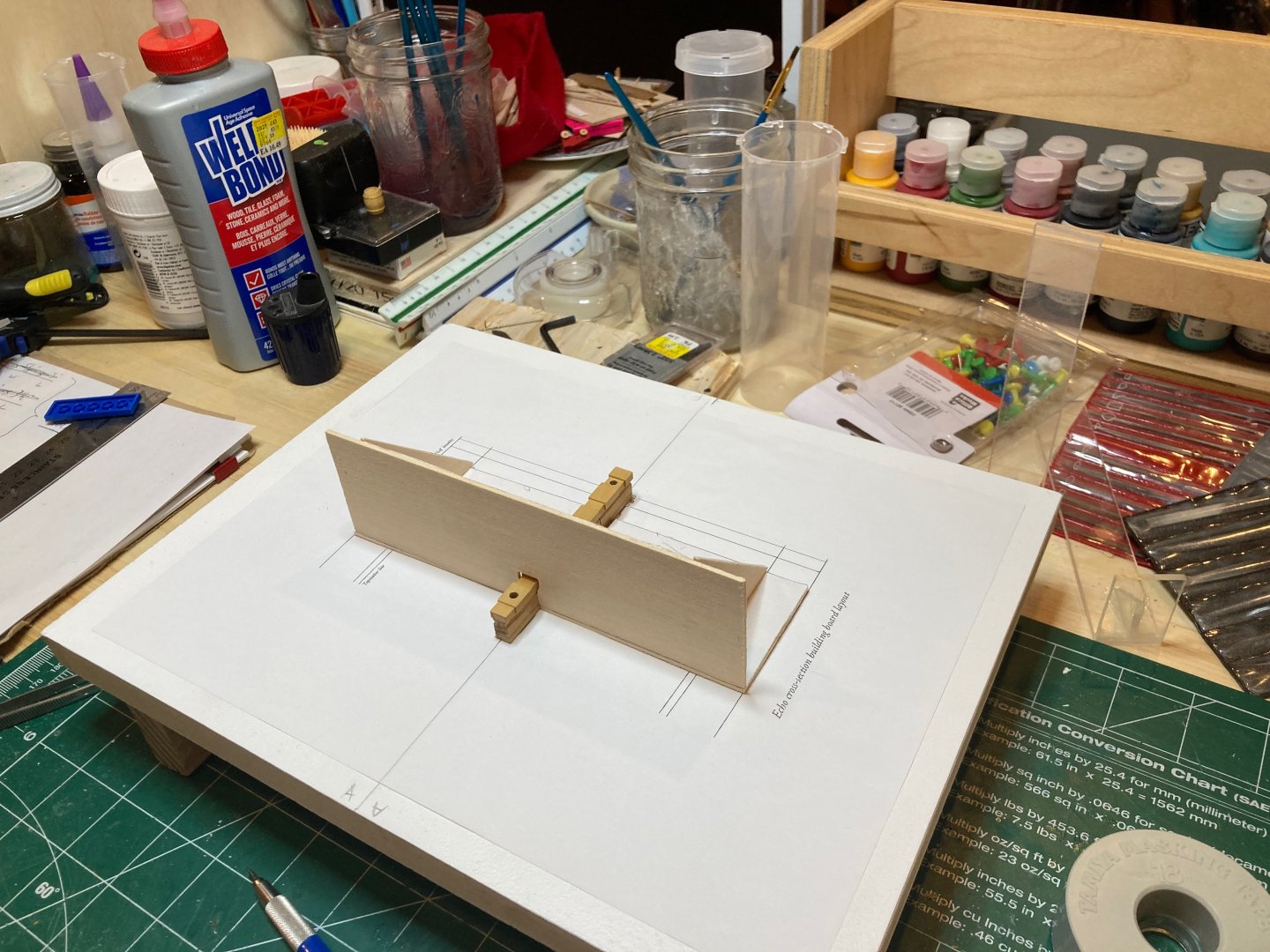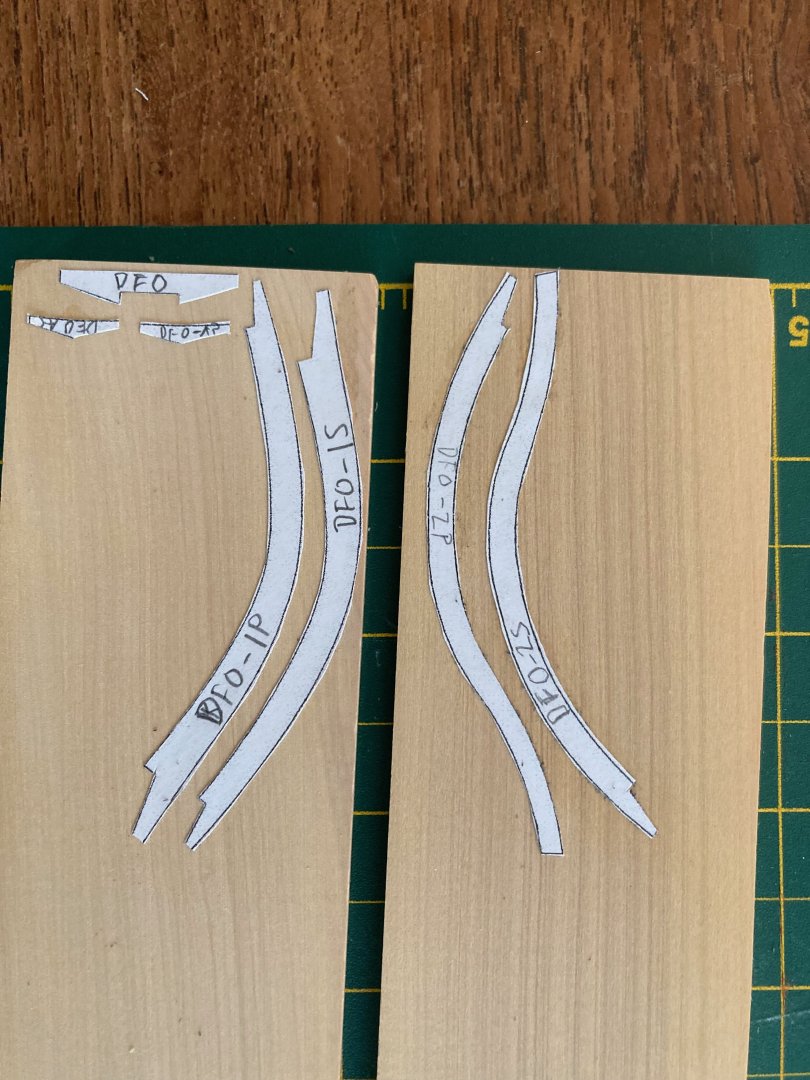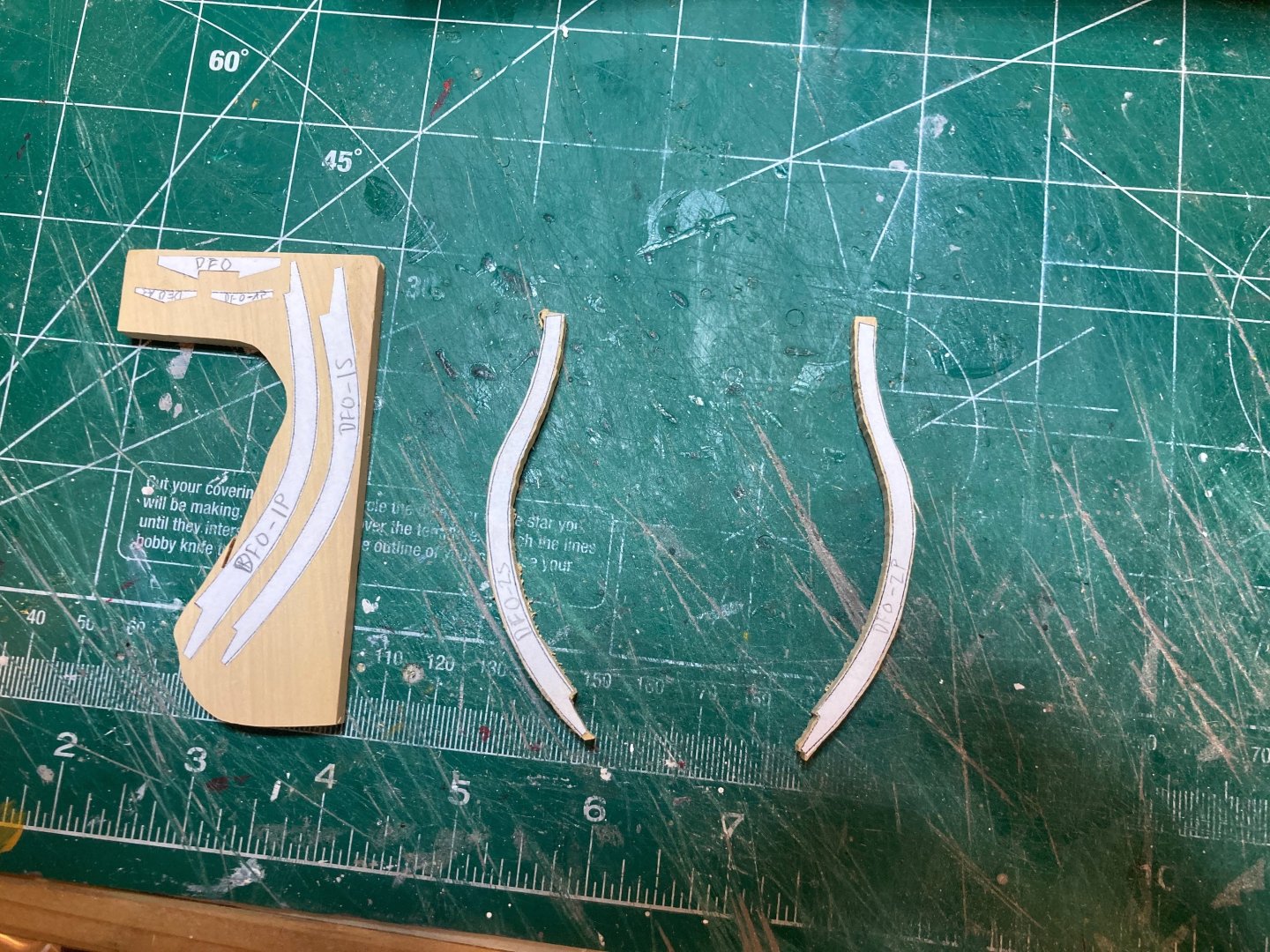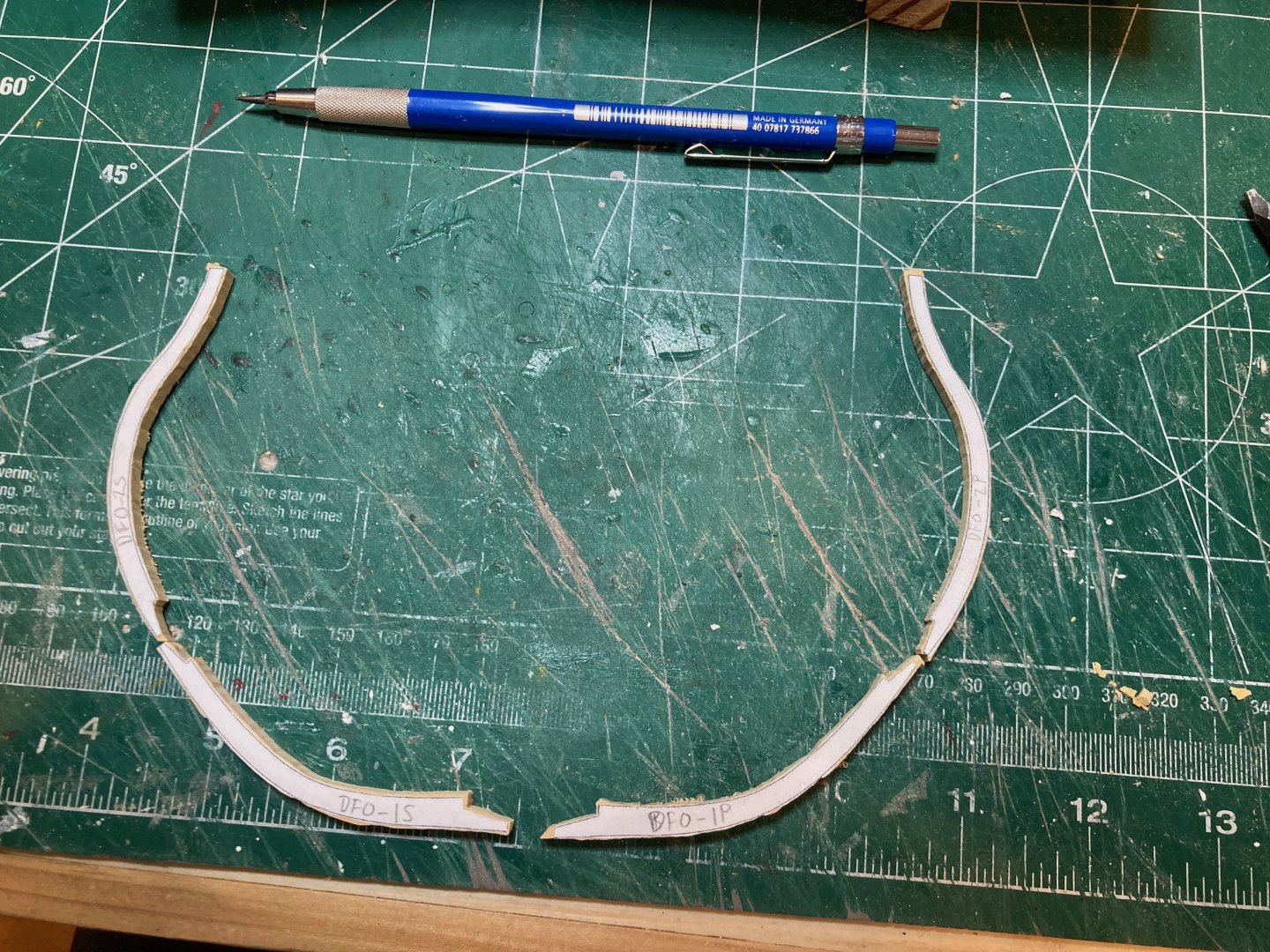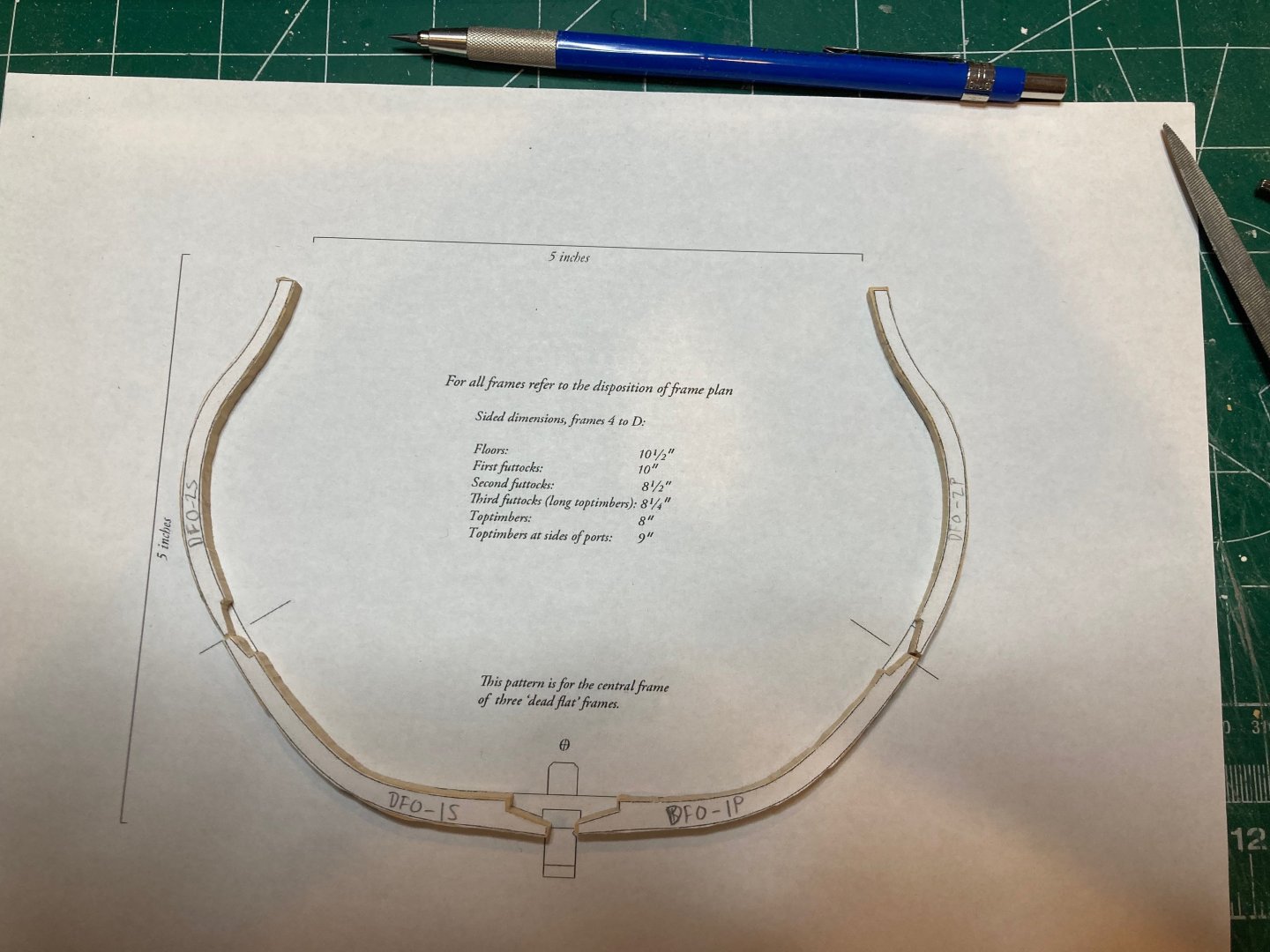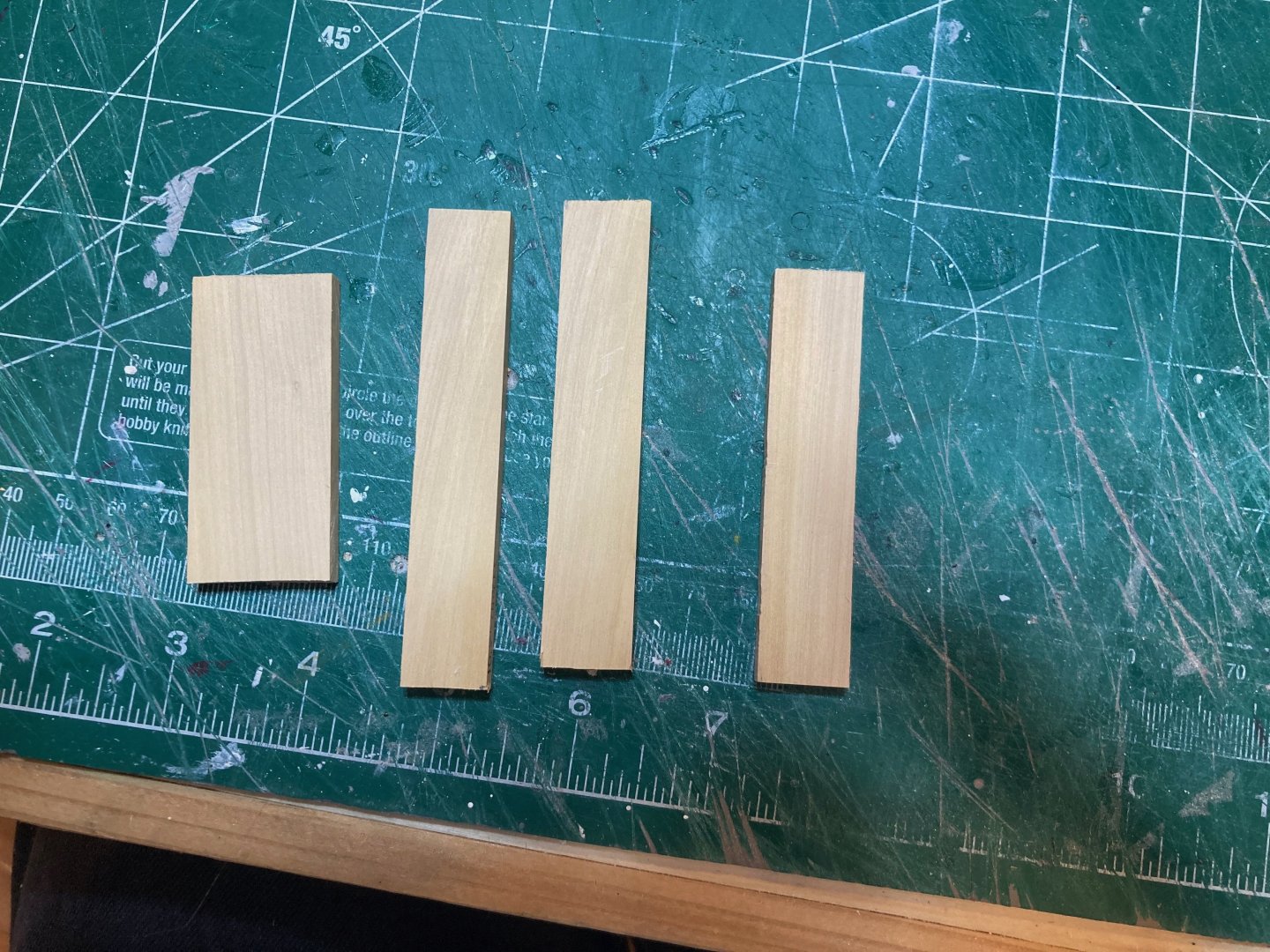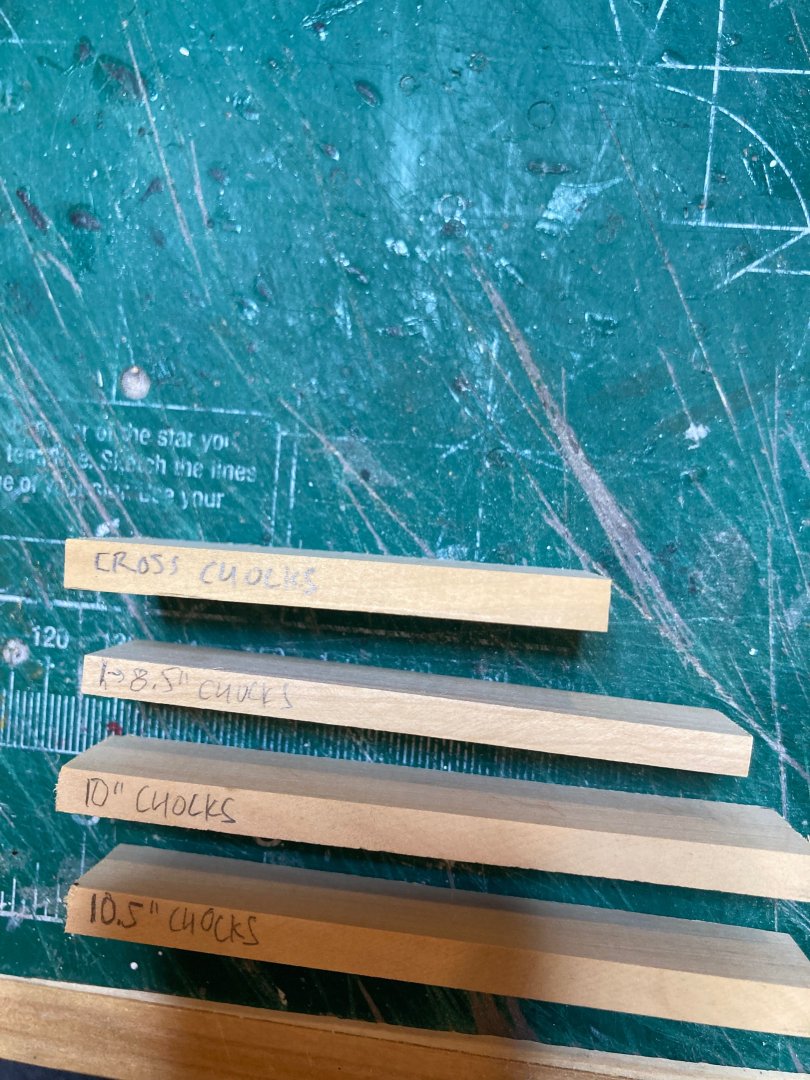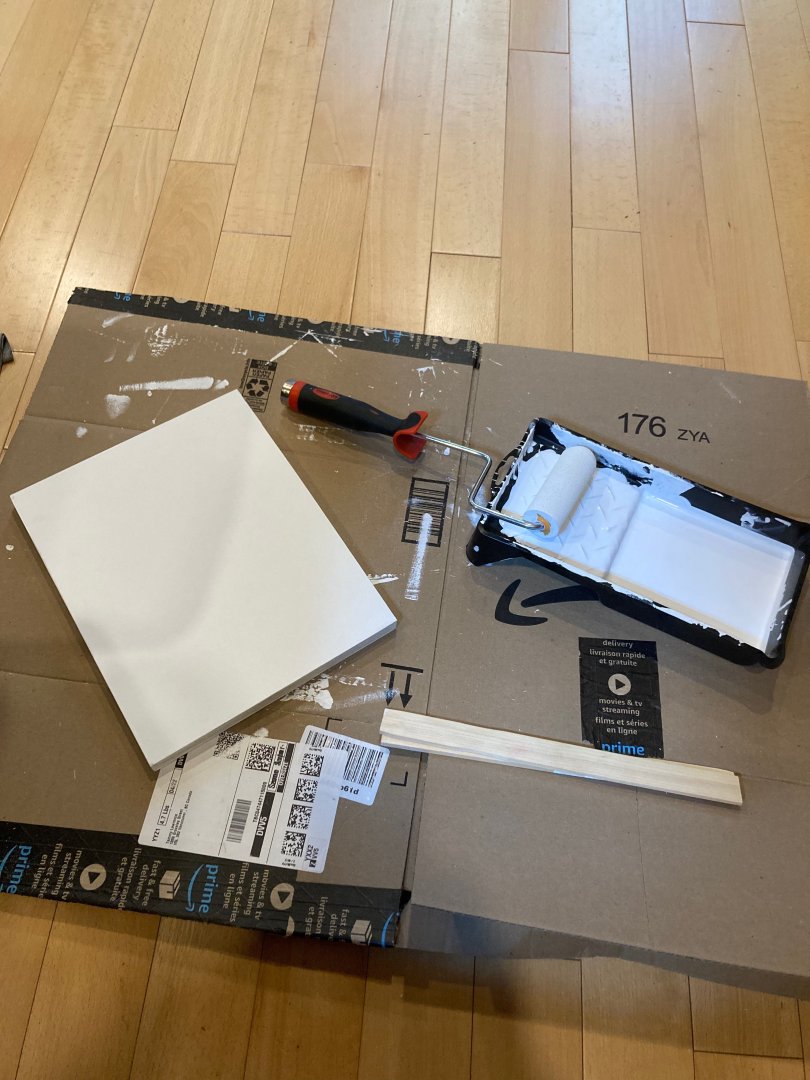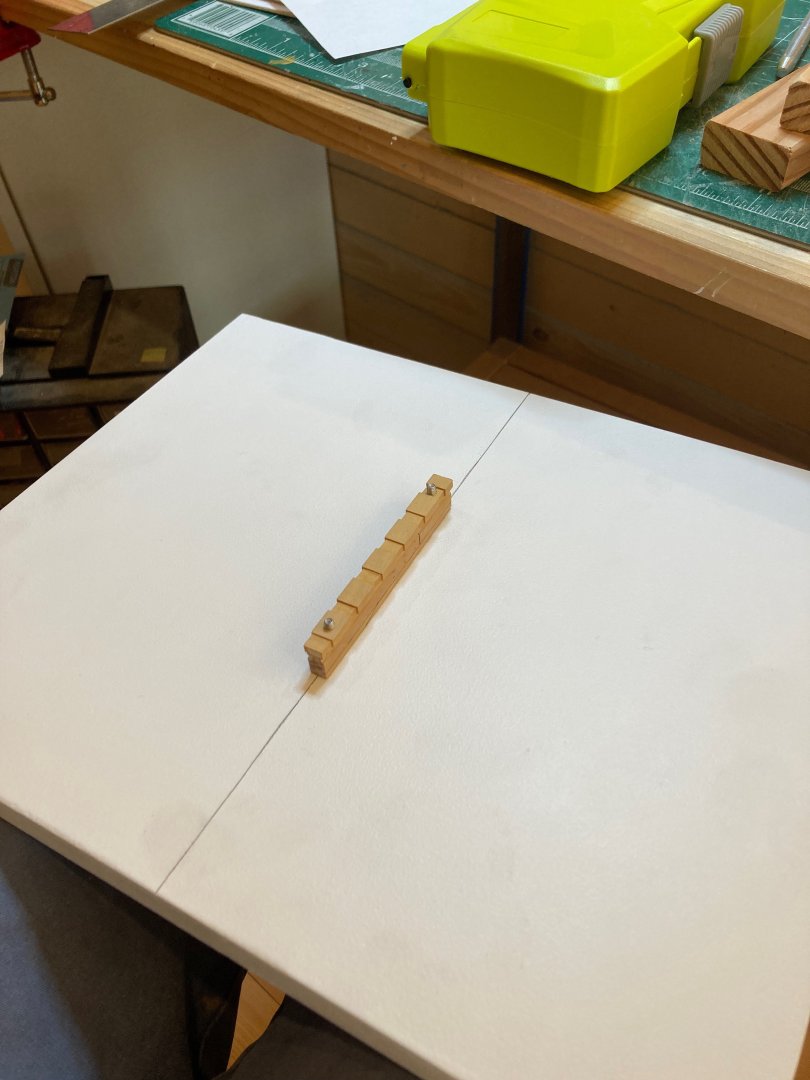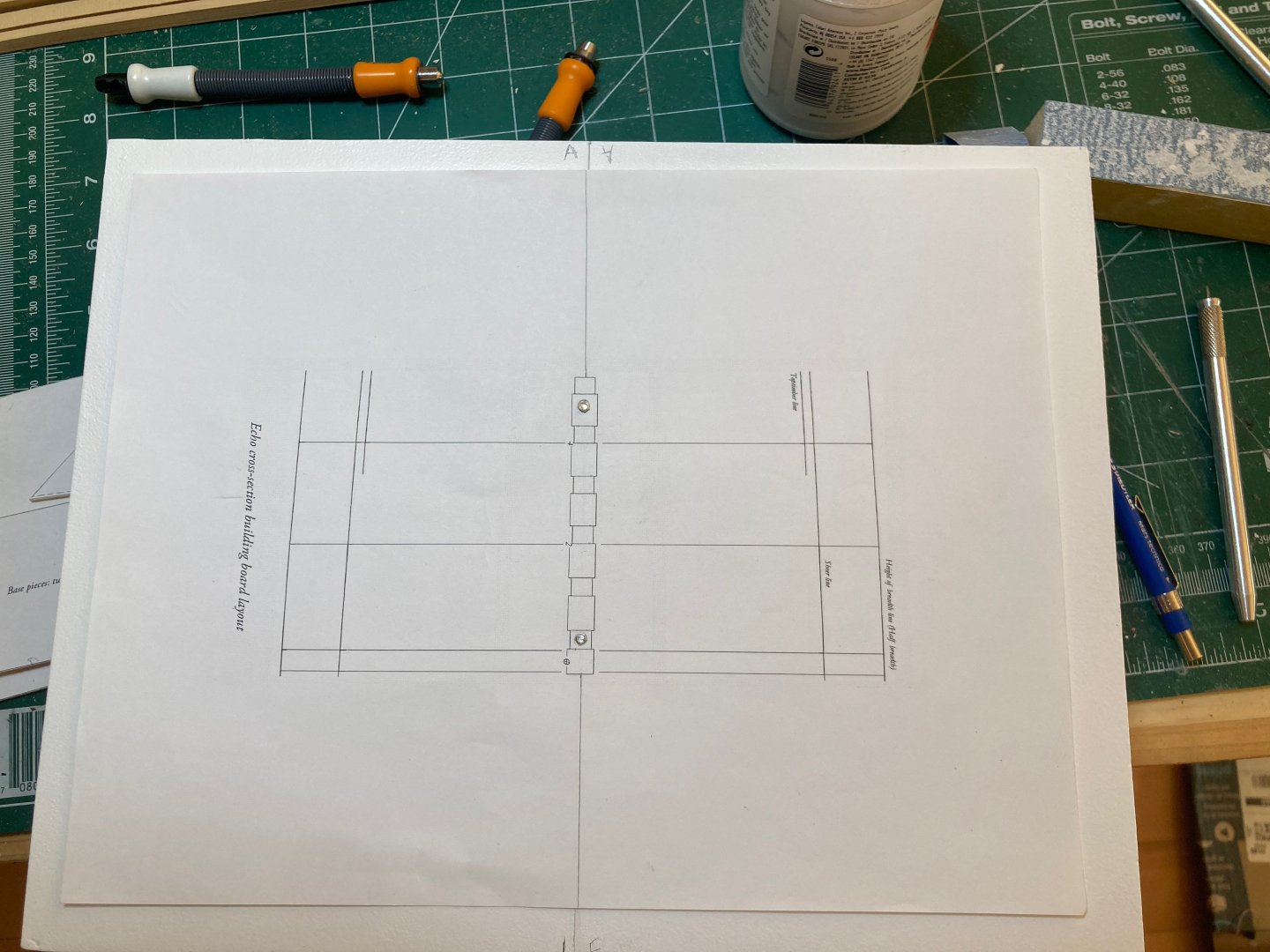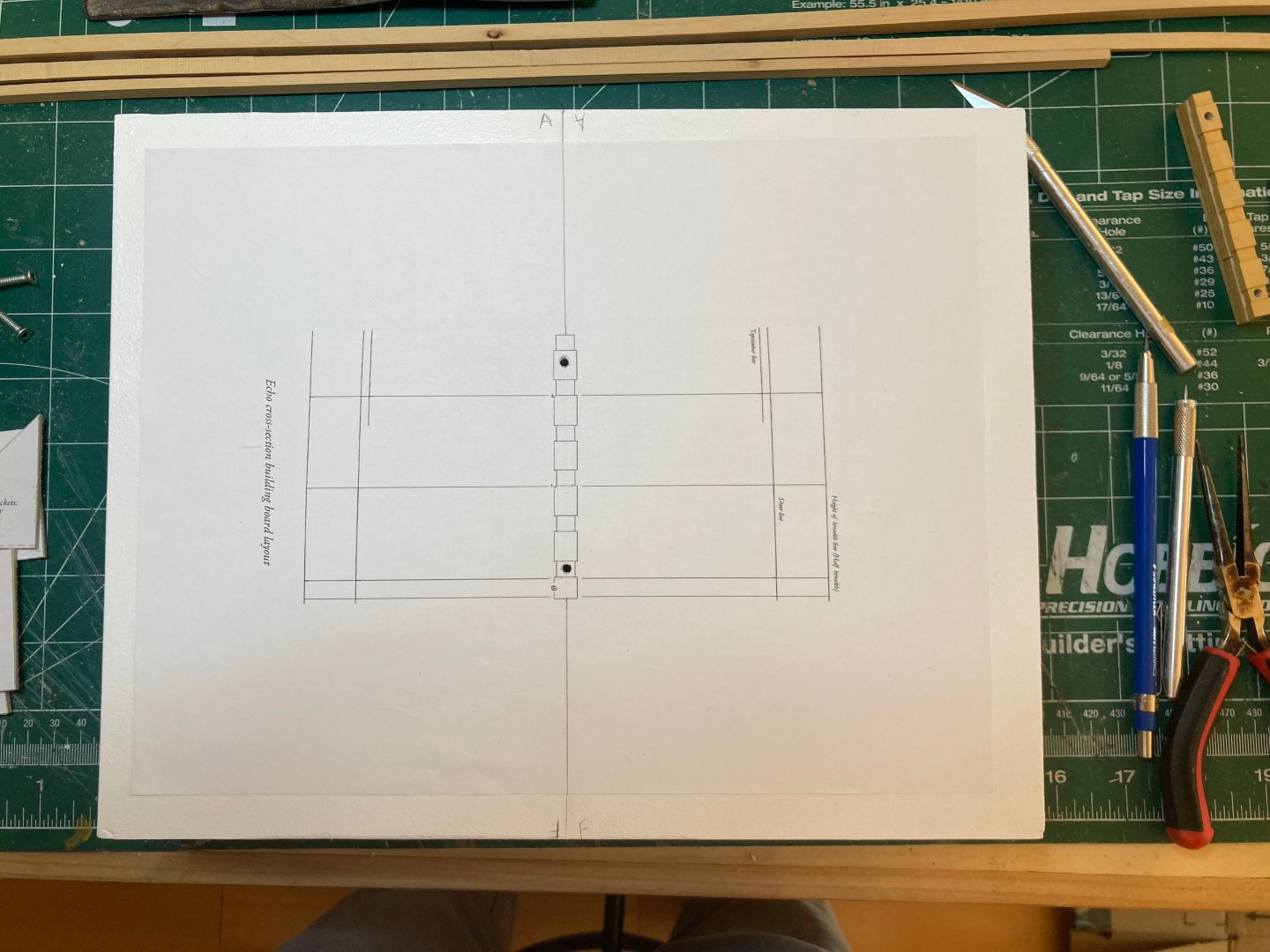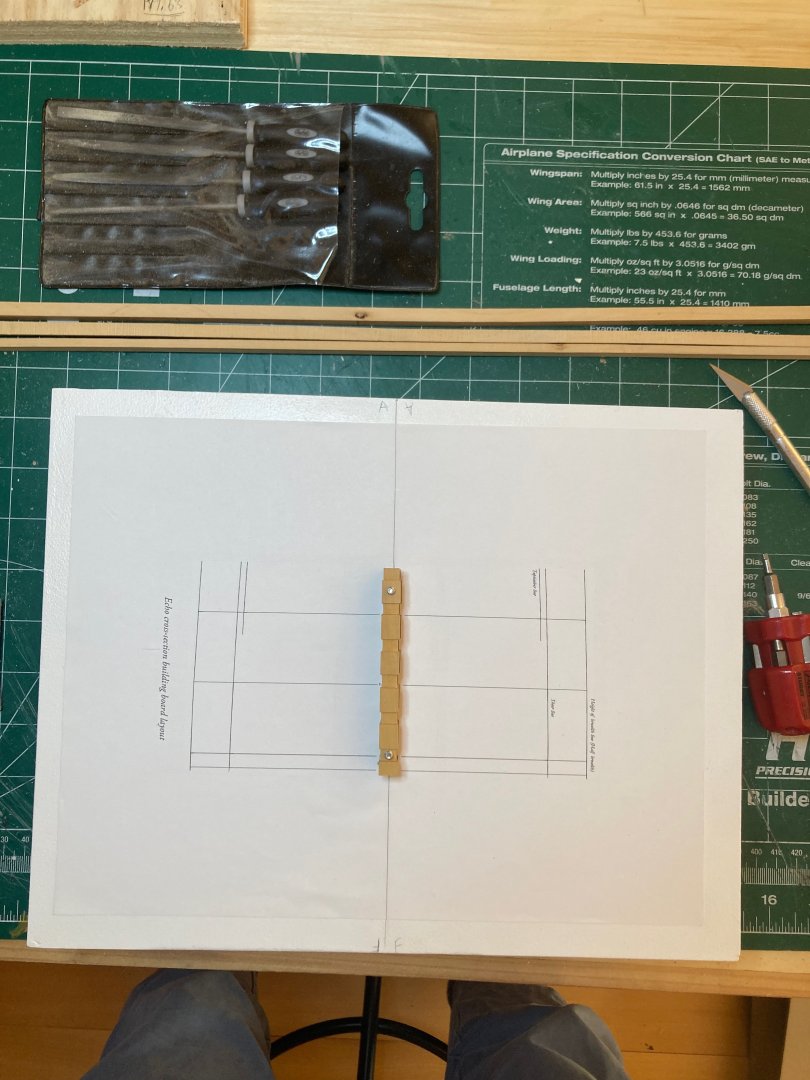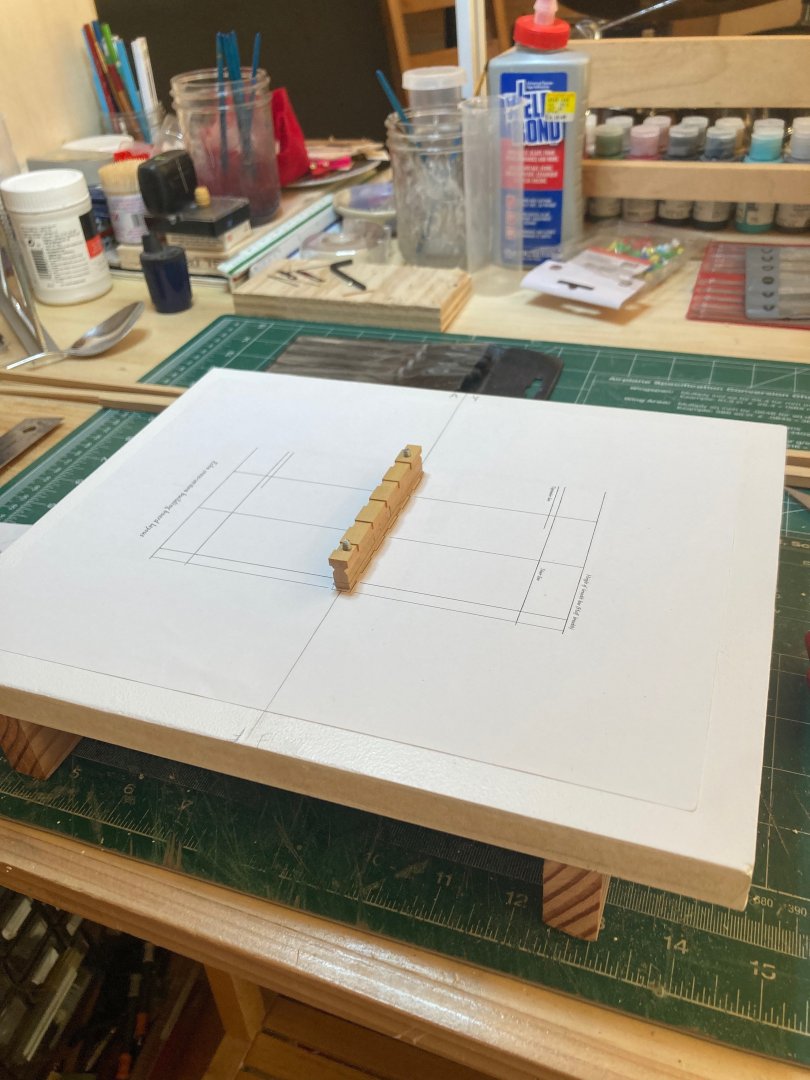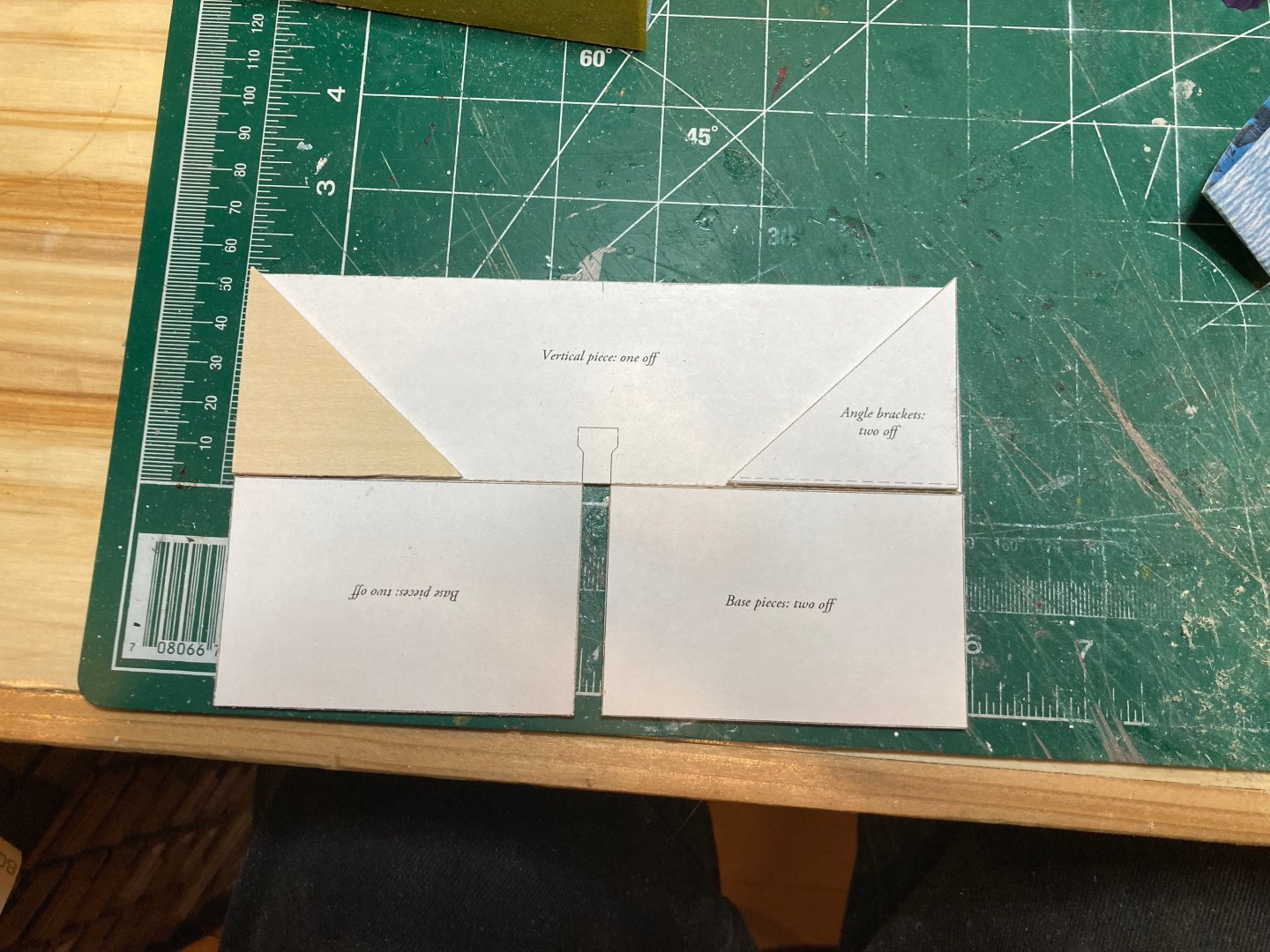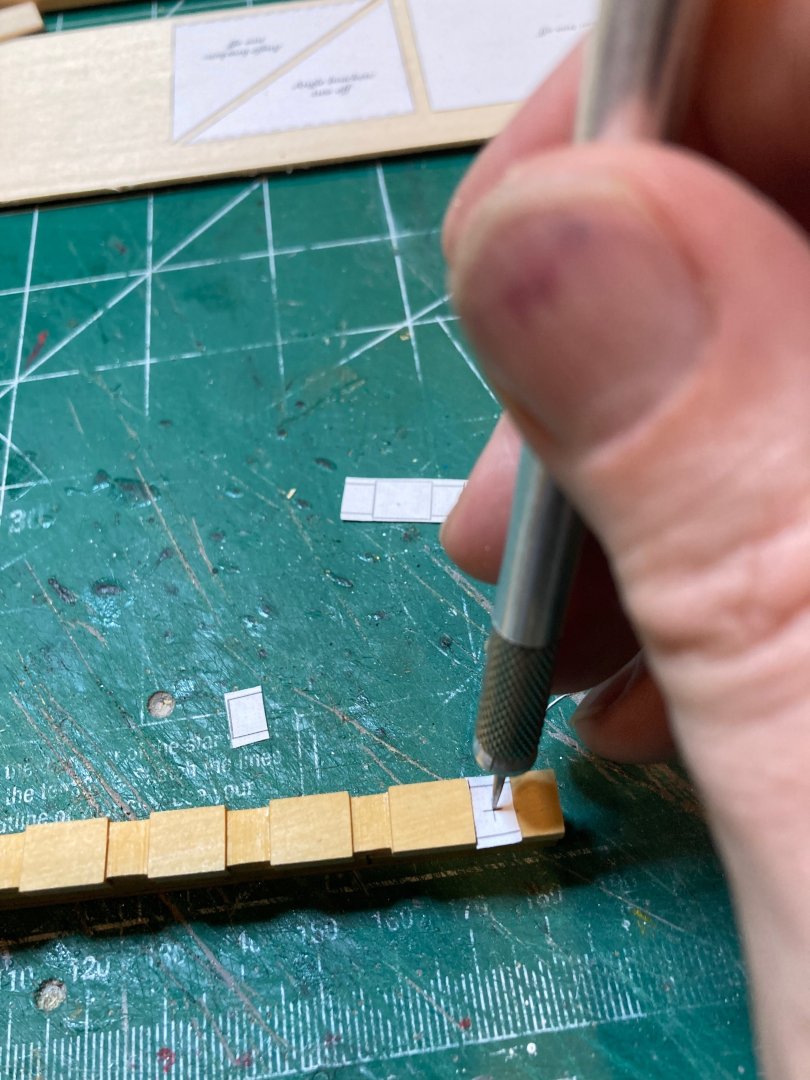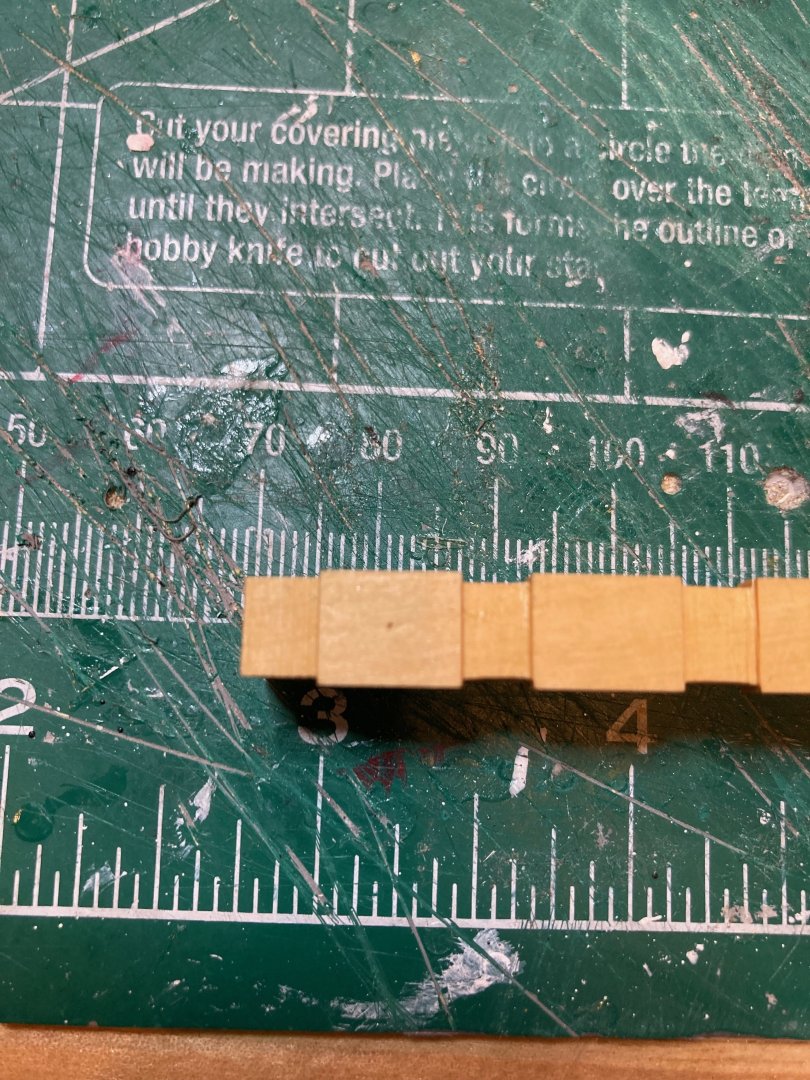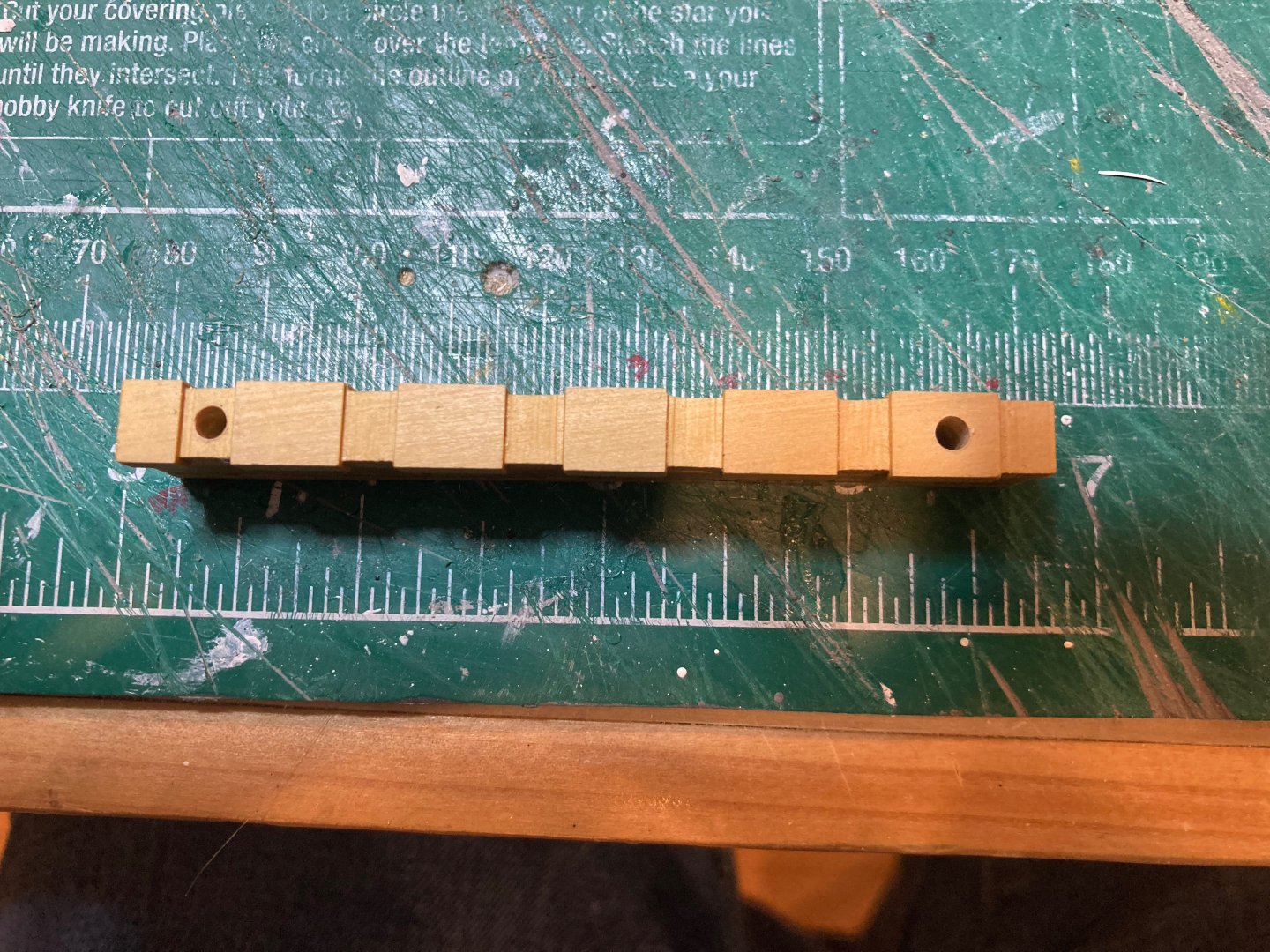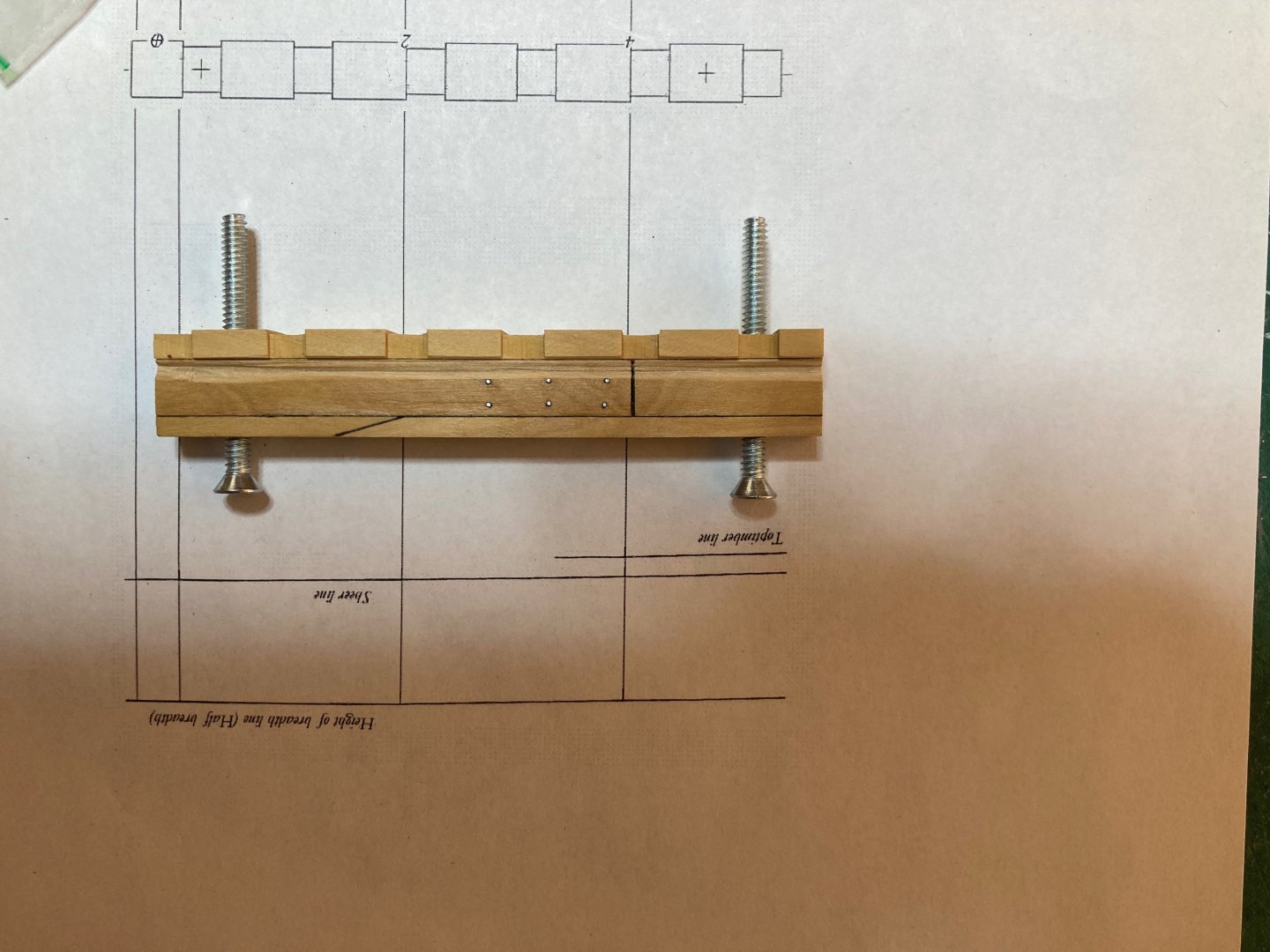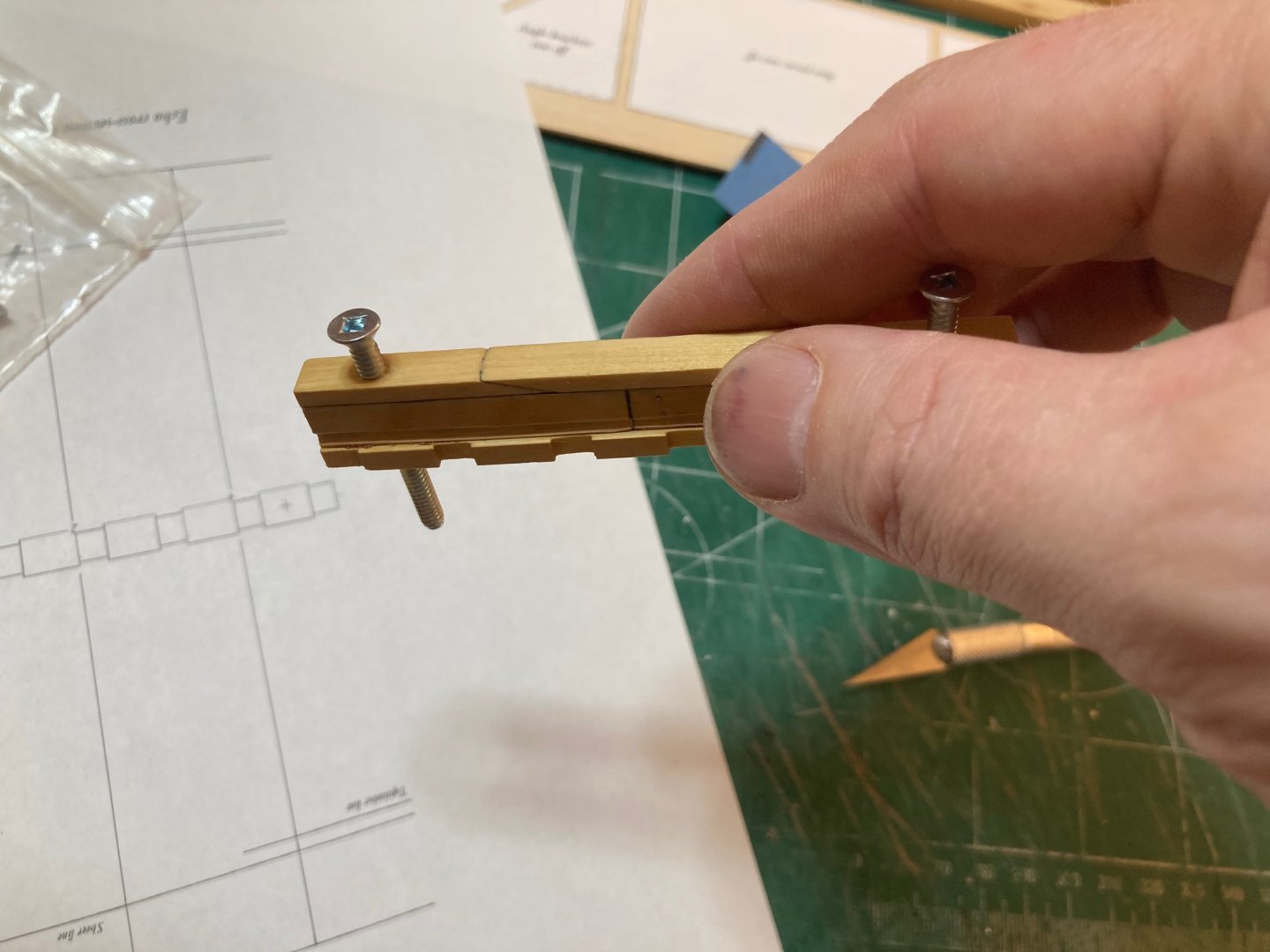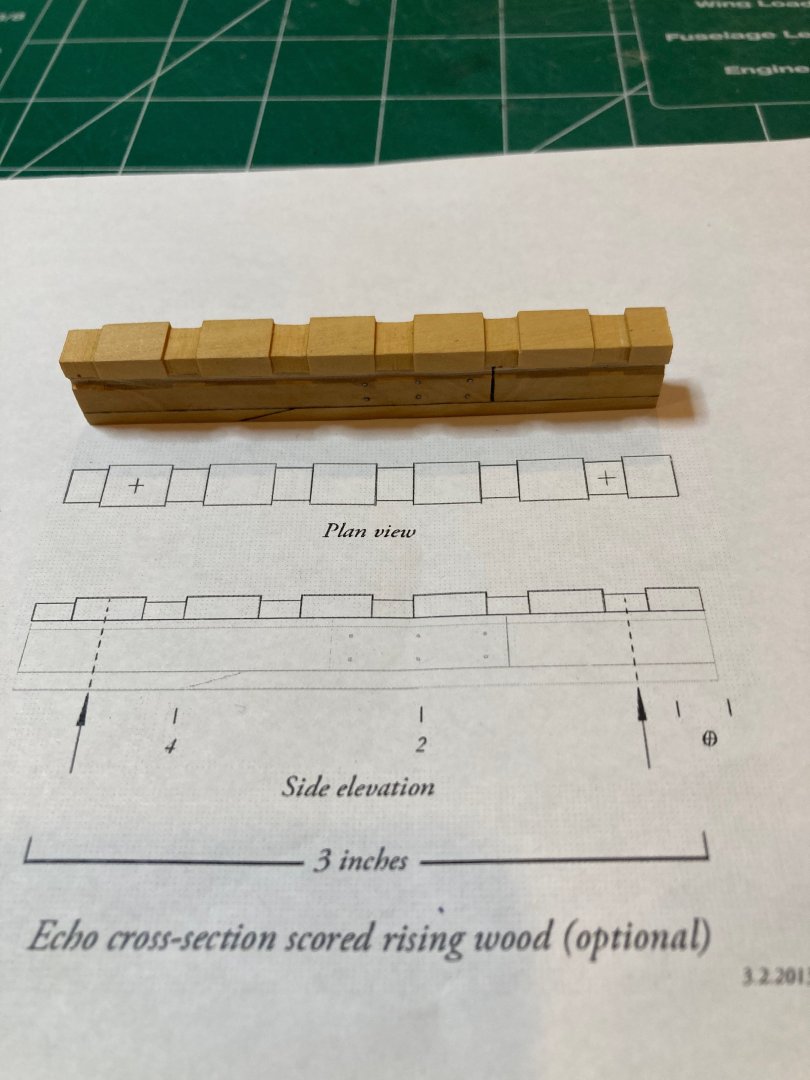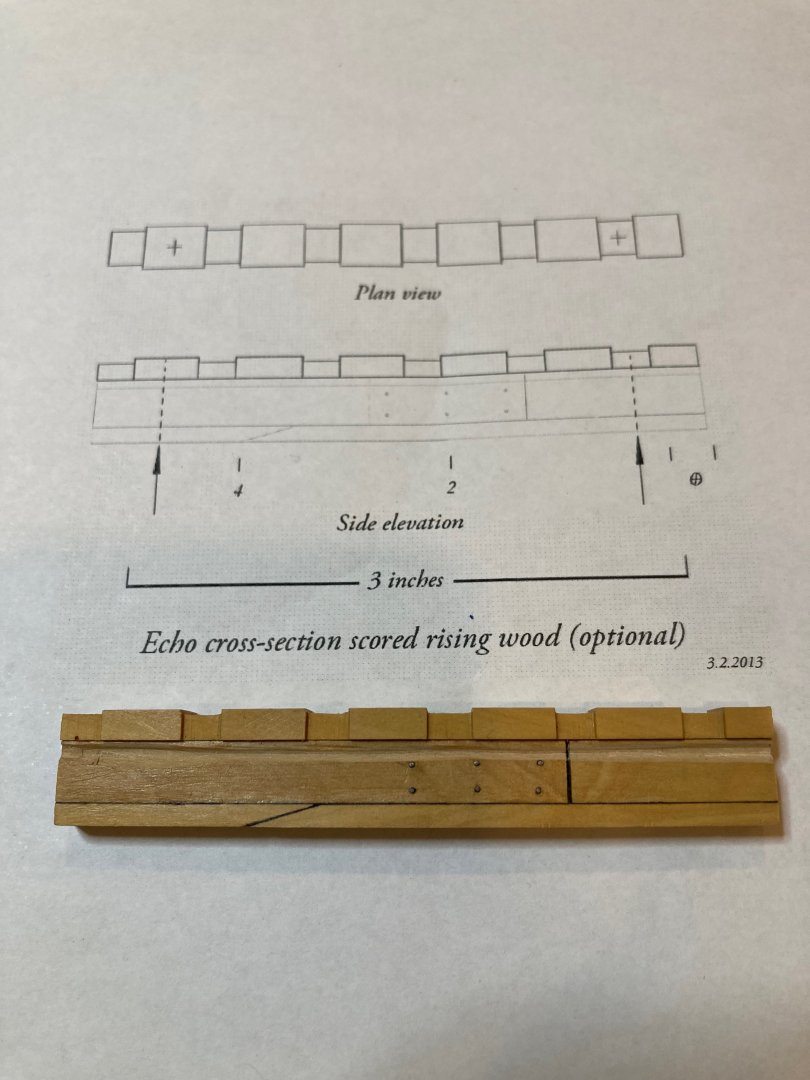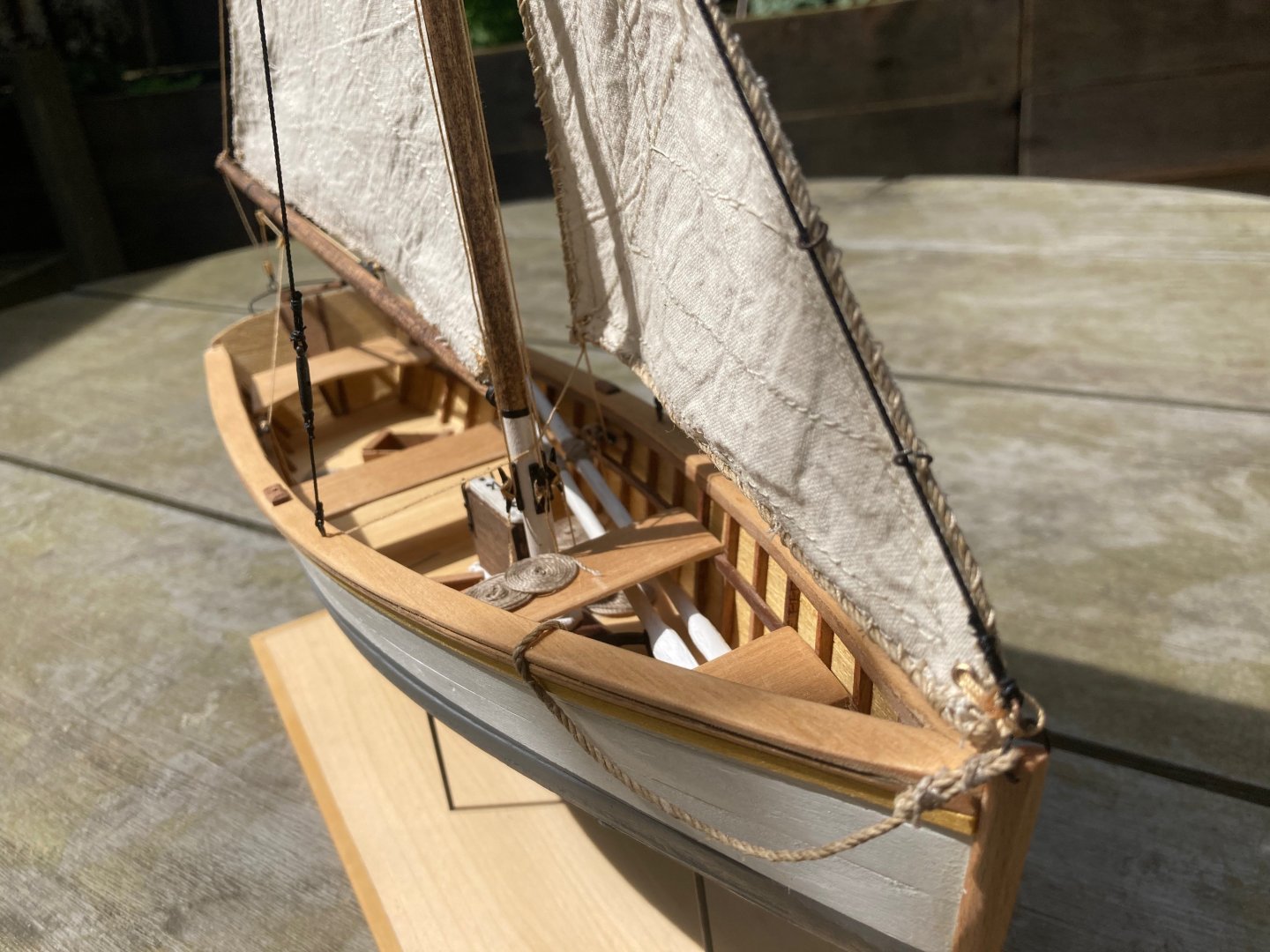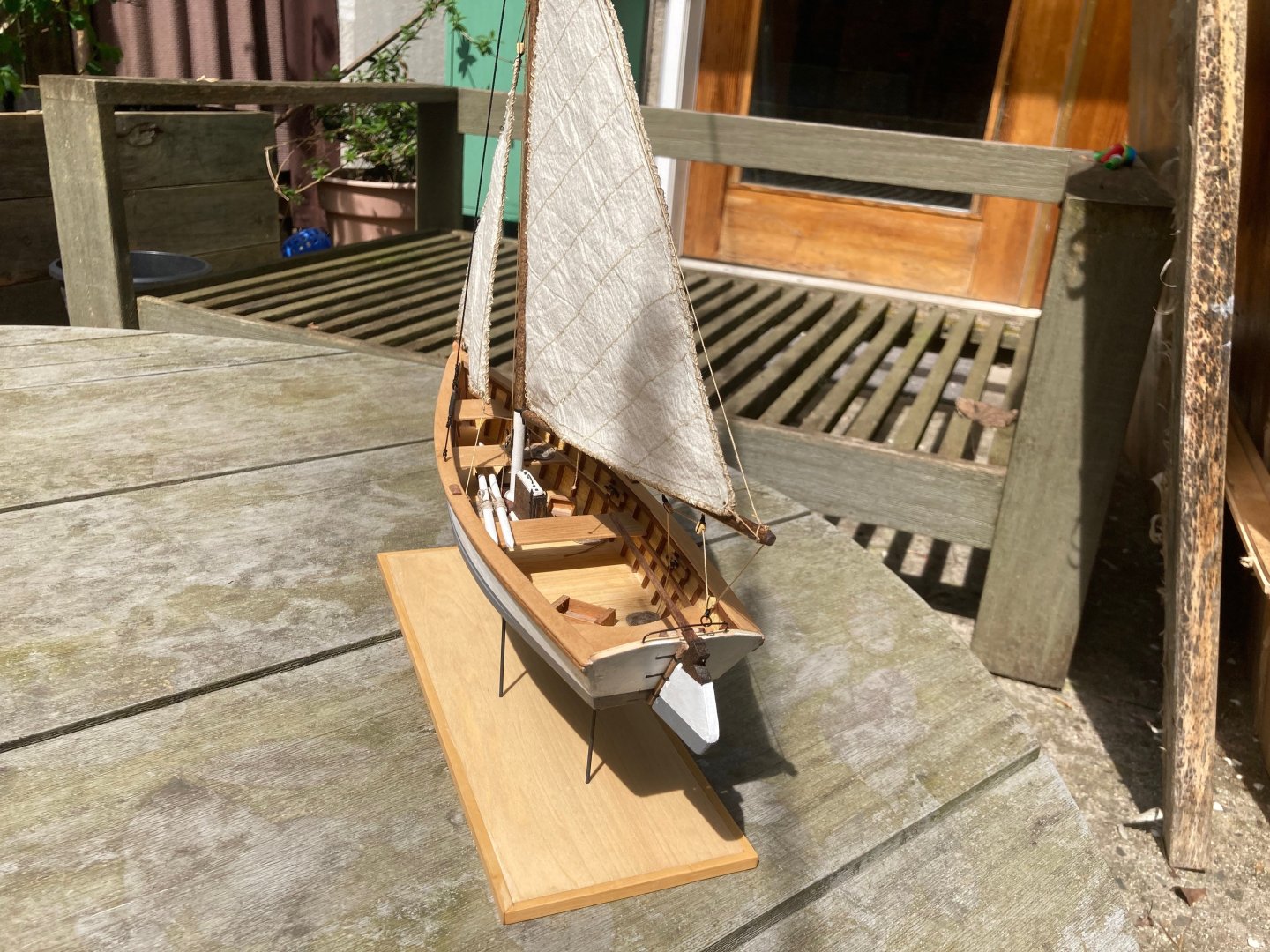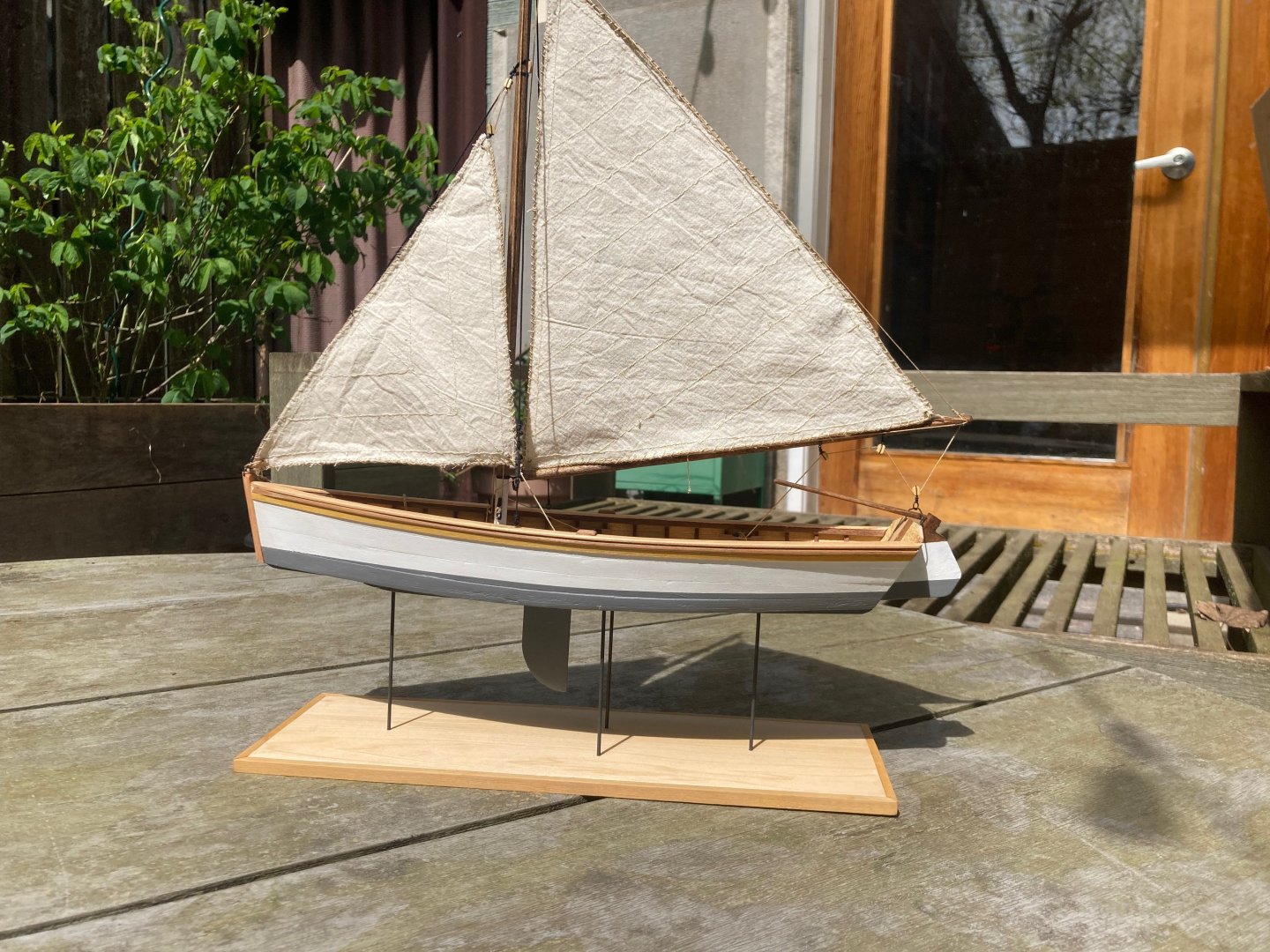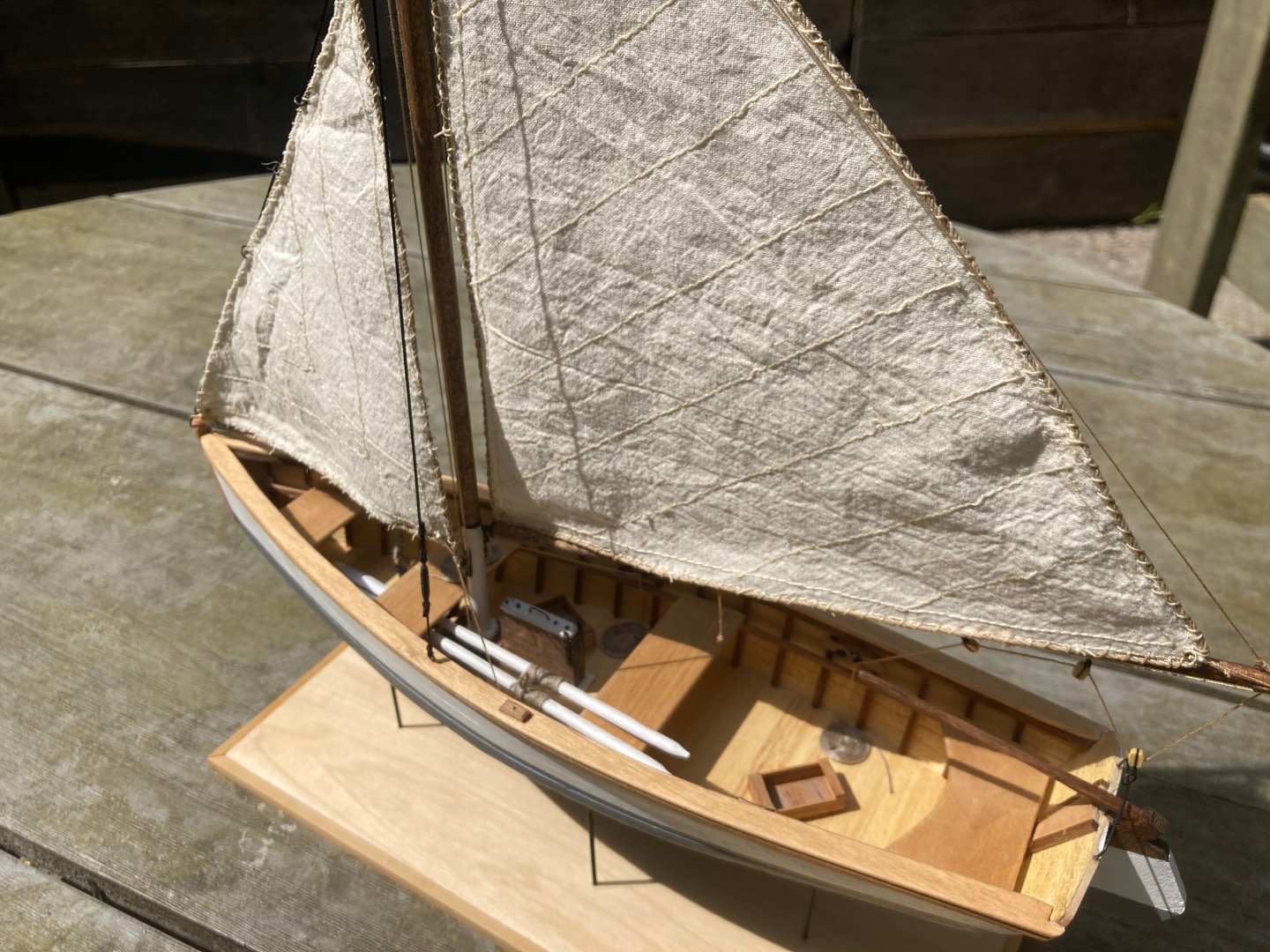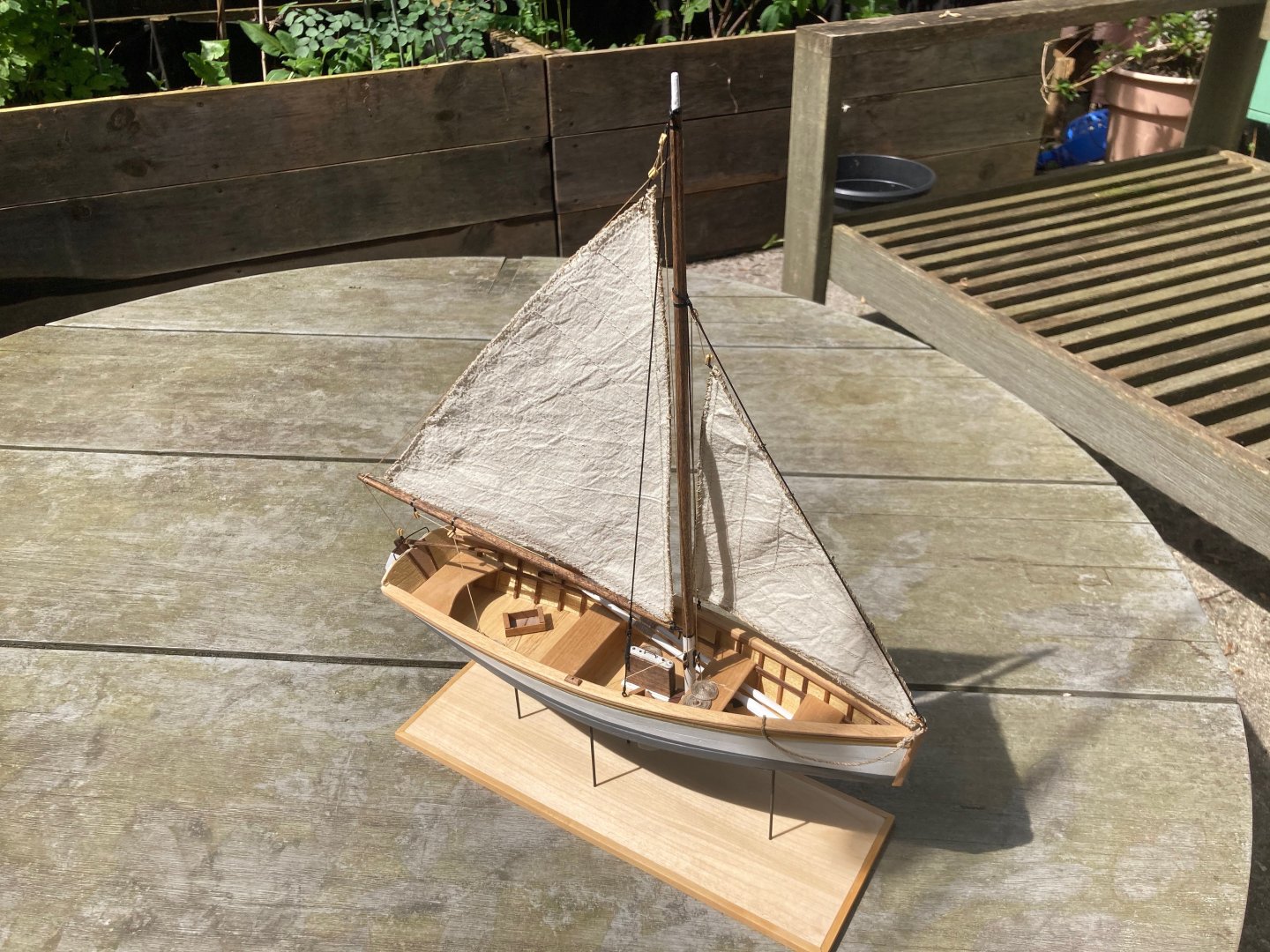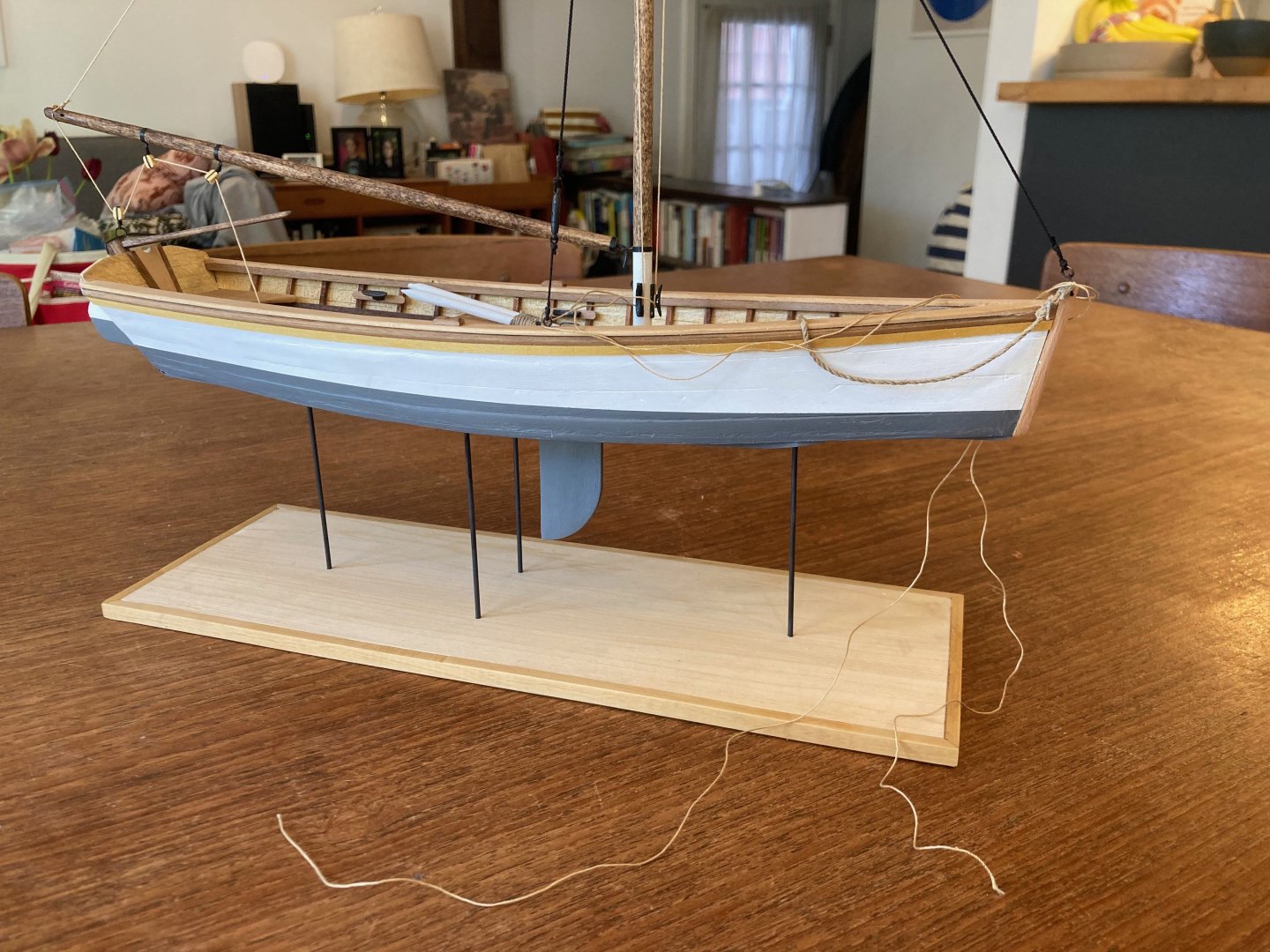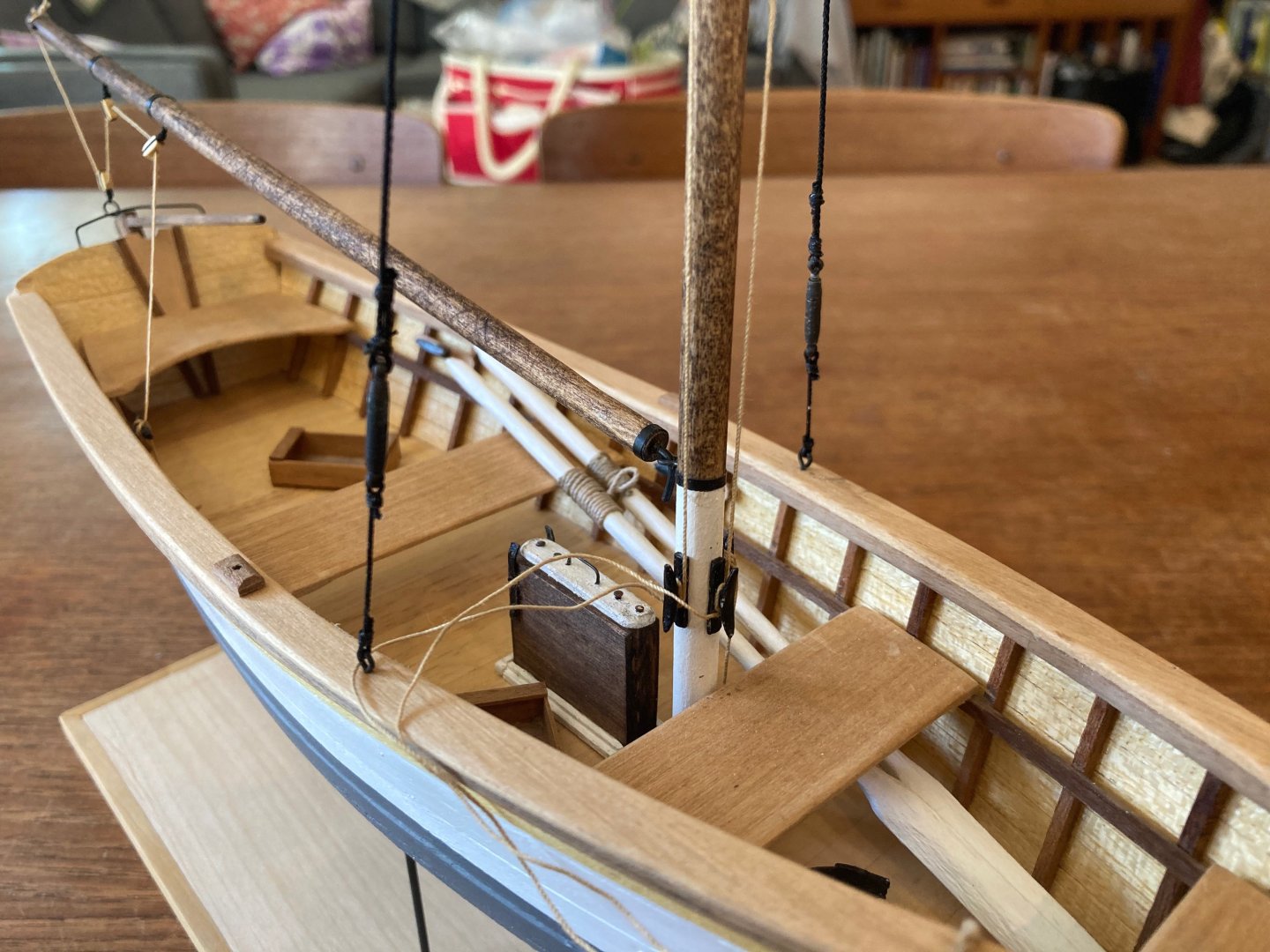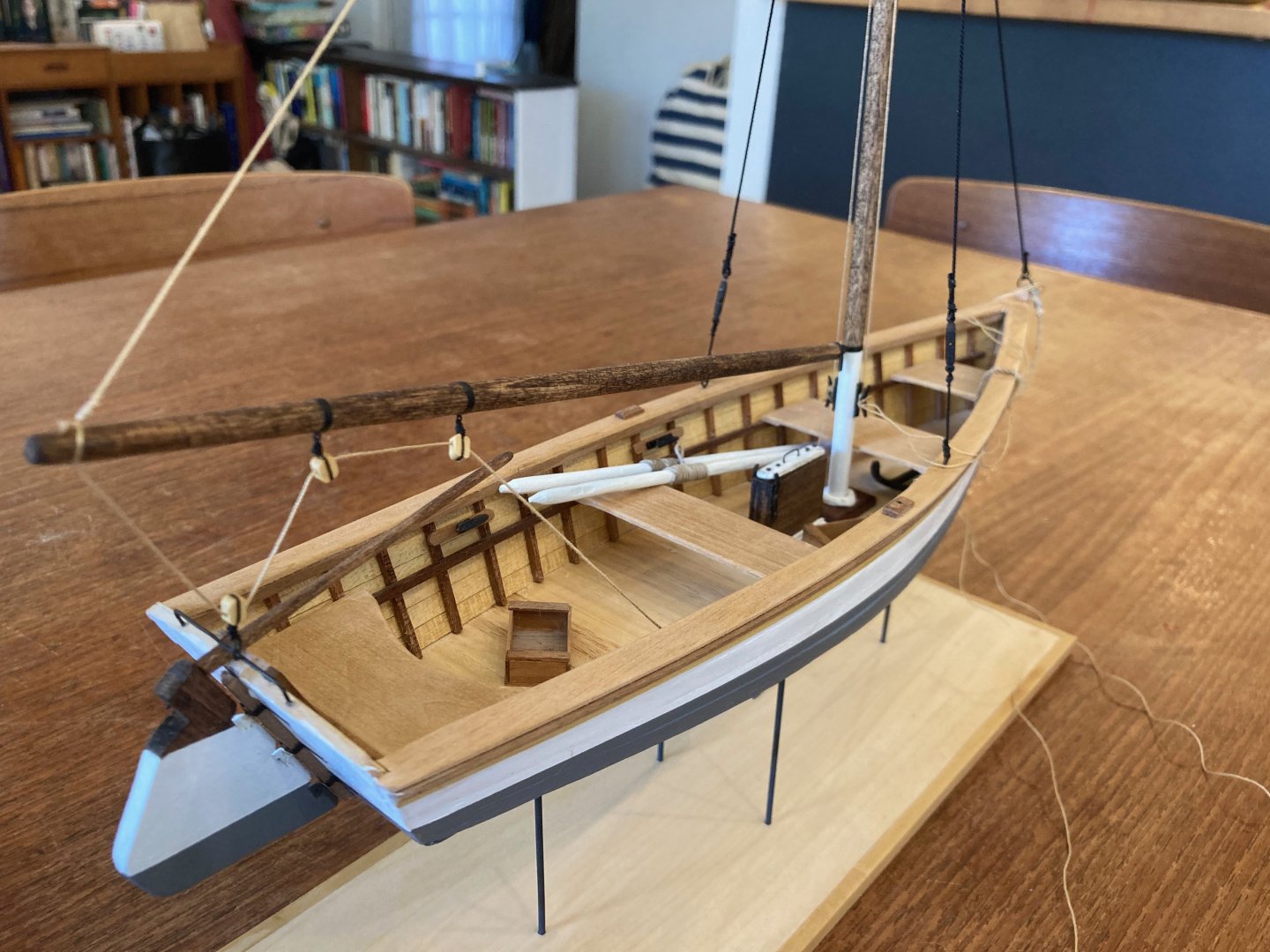-
Posts
1,920 -
Joined
-
Last visited
Content Type
Profiles
Forums
Gallery
Events
Everything posted by hamilton
-

Beginner looking for advice on first kit
hamilton replied to O-Nurse's topic in New member Introductions
Yes, Ross, but the amortization case is relative to cash flow, so the logic might not work for everyone - if I don't have $500 to drop on a model kit, then it doesn't matter how long it takes me to build it. As you might be able to tell from my signature, I clearly have a hard time following what I call "logic" myself! In any case, not knowing exactly the financial situation of other modellers, I hesitate to make recommendations based on what I might be able to afford. Personally, I applaud the efforts of designers like Chuck and CAF who offer larger, more expensive builds in chapter form - this immediately makes the economic calculus of this hobby a little easier to work for more potential modellers and is a very welcome business innovation in the current economic climate. Your Diana looks great, by the way! hamilton -

Beginner looking for advice on first kit
hamilton replied to O-Nurse's topic in New member Introductions
Lots of good advice here - I'll chime in with an extension on Frank's advice above - this is not a cheap hobby and tools are as important as kits - given what you say about yourself above, I imagine you've got some decent tools - but modelling tools can get quite specialised on the tool front - your full sized table saw is a little too much for the kinds of jobs a miniature table saw gets put to in ship modelling, for example, and it's doubtful that you'll need to invest in a micro-lathe to turn your own canons or rail stanchions until you get right into the weeds of the craft. I built my first kit with little more than a dremel tool, some #10 and #11 exacto blades, a set of small stainless steel tweezers, a pin vice with a set of micro drill bits, a little saw and a ball peen hammer - all purchased on the cheap to begin with and then replaced with better quality stuff as I discovered that this is something I like doing and want to keep doing and learning about. With some of the beginner kits from Model Shipways (which I would recommend as first attempt) that's all you need and since the beginner kits are usually quite affordable you're not breaking the bank just to see if you're into the hobby or not. It's tempting to go for a fully rigged ship of the line or a big 19th century clipper, since they look so cool, especially in the hands of some the pros on here. But they will very rapidly overwhelm if you don't first develop a general feel for the craft and work your way up - starting small and joining this forum are two decisions you won't regret! hamilton -
Thanks Greg for this clear explanation - your approach to the chocks makes a lot of sense - I have been using the drawings to make these to this point, so I'll try your technique. I've already got the mechanical 2mm lead holder and hard leads but maybe a new disc sander is in my future....Thanks again - this is very helpful! hamilton
-
I've now constructed the first two frames - deadflat and deadflat 1. There is still a fair amount of cleaning up and refining to do, but for now I'm pretty happy with the results. The joints on deadflat 1 between the futtocks was pretty weak and I had to redo the chock to try to refine them, which was successful enough for the moment, but I really need to get a decent technique down for these joints so they are more secure....apart from "practice makes perfect" are there other things I should be doing to ensure better joints at the chocks? In any case, there is still work to be done on both frames - I need to refine their profiles along the molded dimension, thin them on the molded dimension towards the toptimbers, file out notches for the sweep port sills and lintels on the aft face of deadflat 1 and add trunnels at the joints. Given the need to align the notches for the sweep ports, I will wait to raise deadflat 1 until frame 1-forward is complete, so I can mark these features out at the same time on both. I also fixed the issue with the keel assembly noted above - I sliced off a short length of 1/16" boxwood from a thicker strip, fixed this to the end of the keel assembly and then shaped it with sanding blocks and files. Unfortunately I only have shots of the un-shaped extension attached to the assembly and not the finished piece - I'll see if I can show it more clearly in a future post. In the meantime, here are some photos. Enjoy and bye for now hamilton
-
I live in Vancouver, so the humidity would argue for the wood expanding....if I were in Scottsdale, maybe it would get all the moisture sucked out of it....this leaves only one possibility - modeller error!! I think I will take a minute or two and just add a 1/16" piece to the front and shape it to suit - not sure I'll be able to blend it very well but as you say Greg it's in a relatively unobtrusive spot.....framing is far more fun than I thought it would be!! But I've got to get my joinery down...... hamilton
-
I'm just noticing something for the first time and kicking myself I didn't notice it before, since it is so obvious! You can see in the photos just posted that the keel assembly is short on the plan drawing - by maybe about 1/16"!! Half of me is tempted to simply attach a 1/16" thick strip of boxwood to this end and shape it to fit - though this will not look as good as it would if I just re-did the whole assembly......arghhh!! hamilton
-
Continuing with the framing - I've now assembled, but not fully completed, the deadflat frame - it remains still to clean up the edges a little, trim down the portion of the chock that steps down from the first futtock to the toptimber, and add trunnels at the futtock joints. I will say that, though my joinery work leaves a lot to be desired (and indicates the need for more practice), I'm pretty pleased with the results. Of course, it's just one frame, so I have to be a bit reserved and wait to see how things shape up as keep going. I started working on the deadflat 1 frame today - making templates, cutting the components out on the scroll saw and doing some initial clean up of the parts. Once the glue has fully cured on the deadflat frame, I'll return to finish it up. Quick question for anyone who might know - is it best to wait to start raising the frames until all are constructed? I can't think of any advantage or disadvantage in raising them one at a time or all at once, but I wanted to ask just in case I might be missing something..... hamilton
-
Minor update on the deadflat frame. The chocks and cross chock are now cut out and I think my approach to doing this (at least provisionally) works ok. As noted above, I made a few billets of boxwood for the cross chocks and the chocks, since I felt that it would be very hard for me to make these if I was just trying to cut them out of the larger sheets along with the futtocks. I position the template of the chock/cross chock at the end of the appropriate billets - in this case, they were all cut from 10" stock - with the angled side at 1 edge. I then use the disc sander to shave the angled portions down - not quite fully, so I can finish them off more carefully by hand with a sanding block. I then cut along the straight edge on the scroll saw to release them from the billet - I was worried that this would be really hard to achieve since the pieces are so small, but it actually proved not too difficult. Some light final finishing with sanding block and files and presto! I now only need to refine the futtocks and then get into the joinery....the kind of finnicky work that normally defeats my lazy and distracted nature, but that I'm determined to really get right! The final shot, below, shows the chocks loosely put together with the futtocks, and it shows I've got some ways still to go before I can finalise the assembly and raise the frame....but I'm enjoying this far more than I feared I might! Hopefully that feeling lasts!! hamilton
-
A bit more progress on Echo. I took some time over the weekend and studied the framing tables supplied by Admiralty for the cross-section, sorted through wood, made copies of the frame patterns and started work on the deadflat frame. I also made the framing square jig, the pattern for which is also included with the other documentation for this build - it is suggested to use heavy card for this, but having an ample supply of 1/16" basswood strip, I decided to use that. For the deadflat frame, I first cut out templates of the individual frame elements, but realised that cutting and refining the chocks and cross chocks might be done more precisely and efficiently if I made billets for this purpose. The chocks and crosschocks are made from different thicknesses of boxwood depending on their location - 10.5", 10" and 8.25". The cross chocks for the forward frames are all 10". So I made 4 billets - 1 10.5" x 5/8" x 3 1/4", 1 10" x 5/8" x 3 1/4", 1 8.25" x 5/8" x 2 1/4" and for the cross chocks 10" x 1 3/4" x 2 1/2". I cut these billets over long for the number of chocks required so I could use the excess as a handle to refine the angled portions of the chocks on my disc sander. The straight edge will be cut using a chisel and refined by hand. I have yet to refine the futtocks so the images below show them as I rough cut them on the bandsaw. Enjoy and bye for now! hamilton
-
Another (hopefully quick) question for you, @dvm27. I've been studying the document called "Echo Cross Section Frame Components", which provides tables giving info on the sided dimensions of frame components, and the drawing of the disposition of frame, and I think I must be missing something in relation to Frame 2 (Aft). On the Frame Components document, there is information given for the 3rd futtock (cut from 9" stock), but none given for the chock or second futtock - this is the case both port and starboard. If I read the table correctly, I'm to attach the 8" 3rd futtock of frame 2 to the 10.5" floor of frame 2 directly using a 10.5" chock - is this right? I know this frame is line with the gunport, so perhaps that explains things. But when I checked this against the disposition of frame drawing, I noticed that a) there are 2 measures given on the 2nd futtock - 8.5" in the lower part and 8" at the upper part - I assume this indicates a taper, rather than two futtocks, since there is no line dividing a 2nd & 3rd futtock as can be seen in the other aft frames.....is that right? Thanks for any clarification you can provide - I hope my explanation of the problem I'm having is clear..... hamilton
-
Over the last several days I constructed the building board for the Echo cross-section - a fairly straightforward process, though aligning the mounting holes in the keel with their positions on the building board tested my eyes and patience....I used 3/4" MDF for the board, painted with 3 coats of matte white acrylic, with two 1 x 2 strips for support. To trace the centre line, I first extended the centre line markings on the breadth plan drawing supplied by Admiralty models. I then positioned this drawing centred on the building board and extended the centre line from the plan sheet to the top and bottom of the building board. Once the plan sheet was removed, I could then connect these two short lines, scribe them with a #11 blade and retrace for emphasis. In a way this process was unnecessary, since the plan sheet is fixed to the building board, but having the centre line on the board provided the necessary reference for aligning the plan sheet with the centre line once I was ready to adhere the plans to the board. I ended up threading the holes in the building board as my 6-32" machine screws were not able to fit through the holes as drilled, but fit perfectly once they were properly threaded. I was quite satisfied when the keel assembly fit nice and snug on the mounting screws along the centre line of the board! At this stage, I am considering making some right angle squares since the ones I have are either too large or too small for the scale of the cross-section. I made some right angle squares from 1/8" acrylic sheet a while ago and these might serve - but I have to find them first!! If your workshop is like mine then you know what a challenge this can be! I also cut out the various parts that make up the framing square that slides over the keel assembly to ensure verticality of the frames - but I've yet to complete this stage....once this is done I'll be moving on to the framing, which is both exciting and a little nerve-wracking...Going to spend some time studying the information provided by Admiralty models, sort out the frame components and boxwood sheets appropriately and set up for constructing the frames.... Enjoy the photos and bye for now hamilton
-
So over lunch today I walked up to the local hardware store (located dangerously close to my house) and picked up a tap & die set to resolve the mounting question asked above - thanks again Dave and VTHokiEE! It took about 1 minute to tap the mounting holes I drilled out yesterday and I was very relieved to find that I hadn't drilled the holes out too wide for the 6-32 tap. A small step, but this lightened up a huge area of ignorance for me in terms of this aspect of modelling. Here are some photos, just to liven things up a bit, though they may not be of much intrinsic interest. The second shot is of the tiny puncture made by the awl - hard to get focus on this..... hamilton
-
Thanks Davec! Very helpful suggestions all around! I agree that all of a sudden my little hobby shop looks pretty pro with the drill press set-up! In fact, I've already got some ideas about re-organising and renovating the work area to allow for more permanent tool set-up - right now, I store my power tools and bring them out when needed - it's not too bad, but it's getting to the point where the time I spend taking things out, setting them up and putting them back relative to the time I spend at the bench is getting annoyingly skewed....but I have a fence to re-do and a deck to resurface first or it'll be gunplay and gravestones over here..... hamilton
-
Thanks VTHokiEE and Greg - thanks for this - I'm a little worried now that the holes I drilled in the keel assembly are too wide - but I will follow up on these suggestions and see! I see now that I'll have to get myself a tap & die set! The Admiral has started to levy what she calls a "practicality tax" on my tool purchases....meaning that I need to start using the things I buy for more than ship modelling.....starting to realise how much my modelling practice depends on the the policy directions of the Central Bank of Canada.... hamilton
-
Quick question for @dvm27 - or really for anyone who has a knowledge of this....I've now drilled the mounting holes into the keel assembly and I have a supply of 6-32 machine screws at hand for the mounting - but I can't find any info in the instructions about the actual process of mounting the keel assembly on the building board....for some reason, my limited "common sense" is stumbling over this..... I assume I have to set the nuts for the machine screws into the keel assembly after shaping the holes to admit them and then epoxy them in place, then mark out & drill corresponding holes in to the building board and fasten the machine screws in from below? The issue is how to widen the holes without really damaging the part - carefully, yes...but I can't imagine a 1/4" chisel is going to do the job.....any hints would be greatly appreciated! Thanks and bye for now hamilton
-
Thanks Greg! I made a point of downloading those a while back, along with the fitting out instructions - in addition to the boxwood framing package for the cross section, I also bought a supply of un-milled boxwood from Crown Timberyard when were at the end of their operation and a friend generously milled this into three 2" x 3" x 36" lengths - I assume this will be more than enough for the fitting out of the cross-section - I downloaded the wood list and once the framing is done, I'll get to have yet another new experience - putting my bandsaw, Byrnes thickness sander, and mini table saw to work milling boxwood sheets and strips! In any case, I hope I can do justice to this build - and learn from the experience and the many other excellent Echo builds out there. Bye for now hamilton
-
Well this is probably ill-advised, but I've decided to start on the Admiralty Models HMS Echo cross-section (1:48). I actually ordered the framing package for this kit from Crown Timberyard way back in....I can't even remember when....a long enough while ago....and in fact a number of years ago I put together the keel, false keel & rising wood for this build - getting a feel for my then newly purchased mini table saw and disc sander. But since then I haven't done anything, taking some time off modelling and then finishing both the Bluenose and my little Off Center sailing skiff and commencing on Corel's HMS Bellona. Bellona is currently at the stage of the second layer of lower planking - a time when I frequently tire of the slow and repetitive work of planking and try to build momentum by breaking it up not with other work, but by starting a totally different model! This is why I say "ill-advised"....but.... I also sometimes use new model builds as excuses to expand the workshop - this is one of those times. Because I absolutely needed a drill press to drill out the mounting holes in the keel/rising wood assembly, right? Plus the numerous other uses that this tool will see in the shop....right? In any case, I feel that with the drill press my tool complement is complete so at least I can close that chapter....for now. So here are a couple of images of the keel/rising wood assembly - the rabbet still needs a bit of cleaning up on both sides, but otherwise, I'm pretty happy with the results. Next I'll be making a building board, drilling out the mounting holes & then starting on the framing - my first time at this, unless you count a couple of test futtocks I cut out several years ago as a trial....in any case, not sure how quickly this will go, but I'm looking forward to this one as a new type of challenge. Bye for now hamilton
-
Hello for a final time here - I've now finished the OC "sailing skiff" - which is, of course, a hybrid of the OC rowing skiff and the Monk Truant (for the rig). I'm quite happy with this little one - it's quite cute and I'm very proud of the results. Here are some photos of the finished model - bye for now and enjoy! hamilton
-
Hi there: I just realised that after almost 3 years (has it really been that long!!), I still haven't put an end to this build log and called it done.....this is for a few reasons, most obviously that in getting back into modelling again, I started juggling this build, the Corel Bellona and my scratch-built Bluenose. Now that Bluenose is done, and the Bellona is well underway, I realised that I still have some stuff to do with this little skiff. I needed to re-do the stem piece, which was damaged for some unknown reason, complete the rudder and do some little details. I had considered earlier adapting her by adding a rig, but put that idea on the back burner until a couple of weeks ago, when I was looking through a book of small boat designs by Edwin Monk and came across the "Truant", whose rig I thought could work (at least aesthetically) with this skiff. It did mean that I would have to file a slot through the bottom of the boat/keel for a dagger board, but this was not too difficult to accomplish. The rigging arrangement and dagger board design were all taken from the Monk "Truant" design. At this point, I've also made and added a main sail and jib, but I don't have photos of these. I just need to add a few rope coils at this point and she'll be done. Here are some photos prior to the addition of the sails - I should be done this one by the end of the week and will post some completion photos here and in the gallery when that's done. In the meantime, enjoy! hamilton
-
Beautiful work on the sails John! hamilton
- 282 replies
-
- Bluenose
- Model Shipways
-
(and 1 more)
Tagged with:
About us
Modelshipworld - Advancing Ship Modeling through Research
SSL Secured
Your security is important for us so this Website is SSL-Secured
NRG Mailing Address
Nautical Research Guild
237 South Lincoln Street
Westmont IL, 60559-1917
Model Ship World ® and the MSW logo are Registered Trademarks, and belong to the Nautical Research Guild (United States Patent and Trademark Office: No. 6,929,264 & No. 6,929,274, registered Dec. 20, 2022)
Helpful Links
About the NRG
If you enjoy building ship models that are historically accurate as well as beautiful, then The Nautical Research Guild (NRG) is just right for you.
The Guild is a non-profit educational organization whose mission is to “Advance Ship Modeling Through Research”. We provide support to our members in their efforts to raise the quality of their model ships.
The Nautical Research Guild has published our world-renowned quarterly magazine, The Nautical Research Journal, since 1955. The pages of the Journal are full of articles by accomplished ship modelers who show you how they create those exquisite details on their models, and by maritime historians who show you the correct details to build. The Journal is available in both print and digital editions. Go to the NRG web site (www.thenrg.org) to download a complimentary digital copy of the Journal. The NRG also publishes plan sets, books and compilations of back issues of the Journal and the former Ships in Scale and Model Ship Builder magazines.



